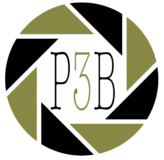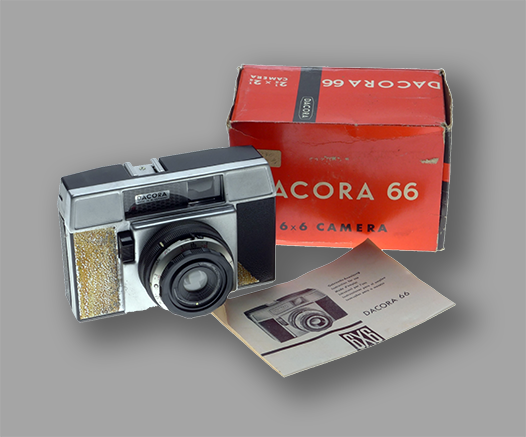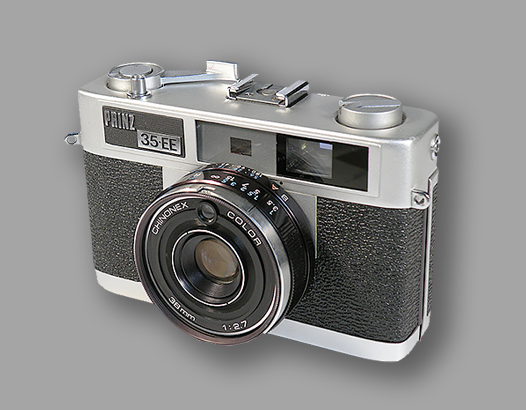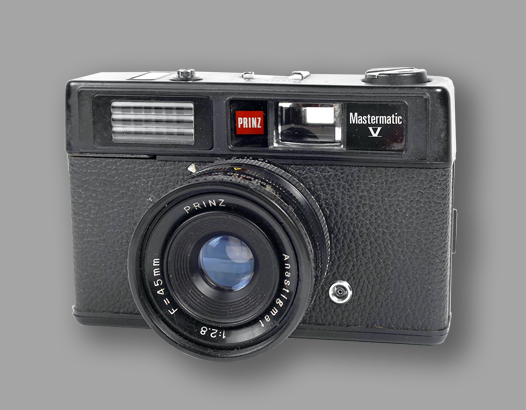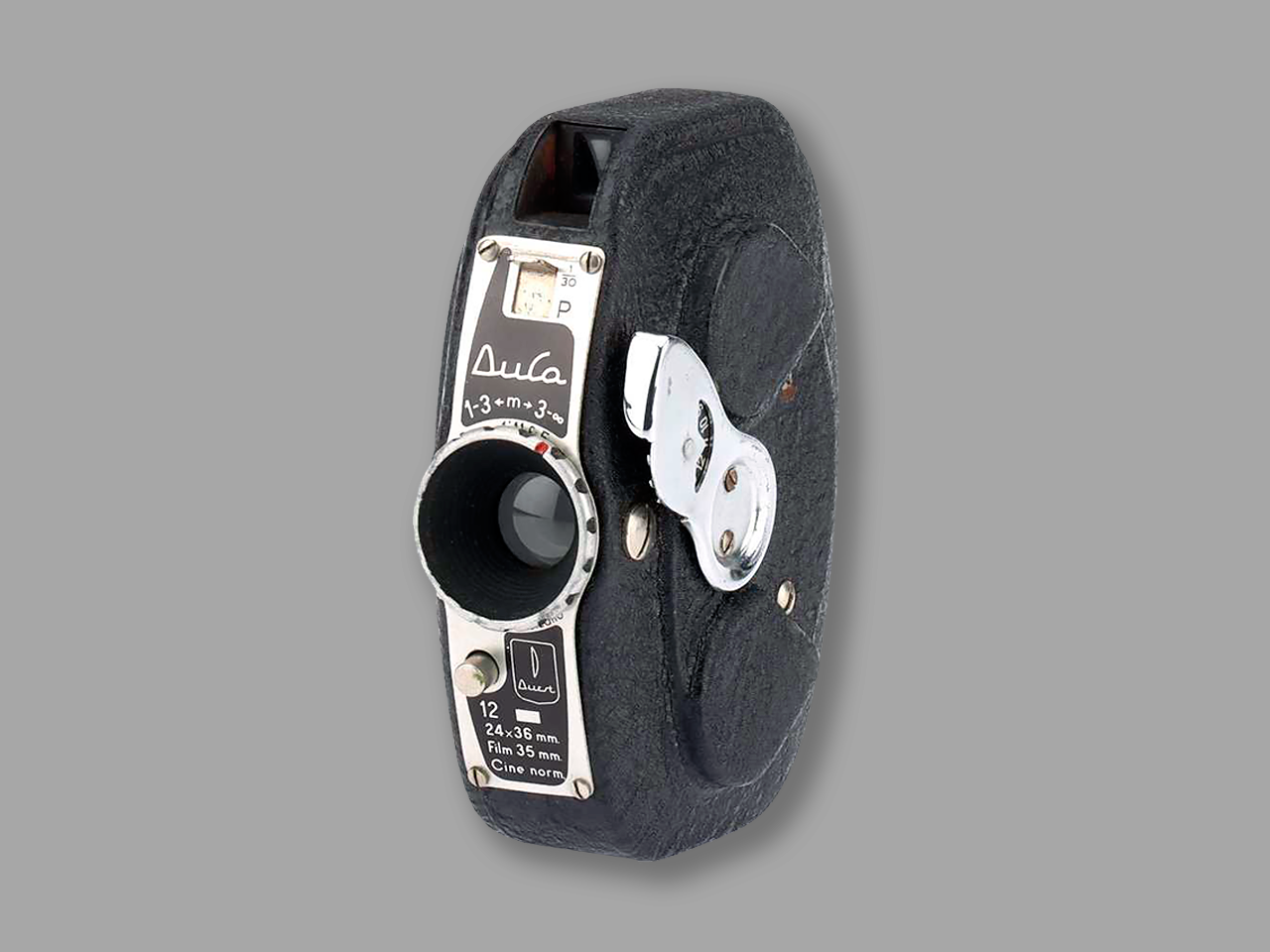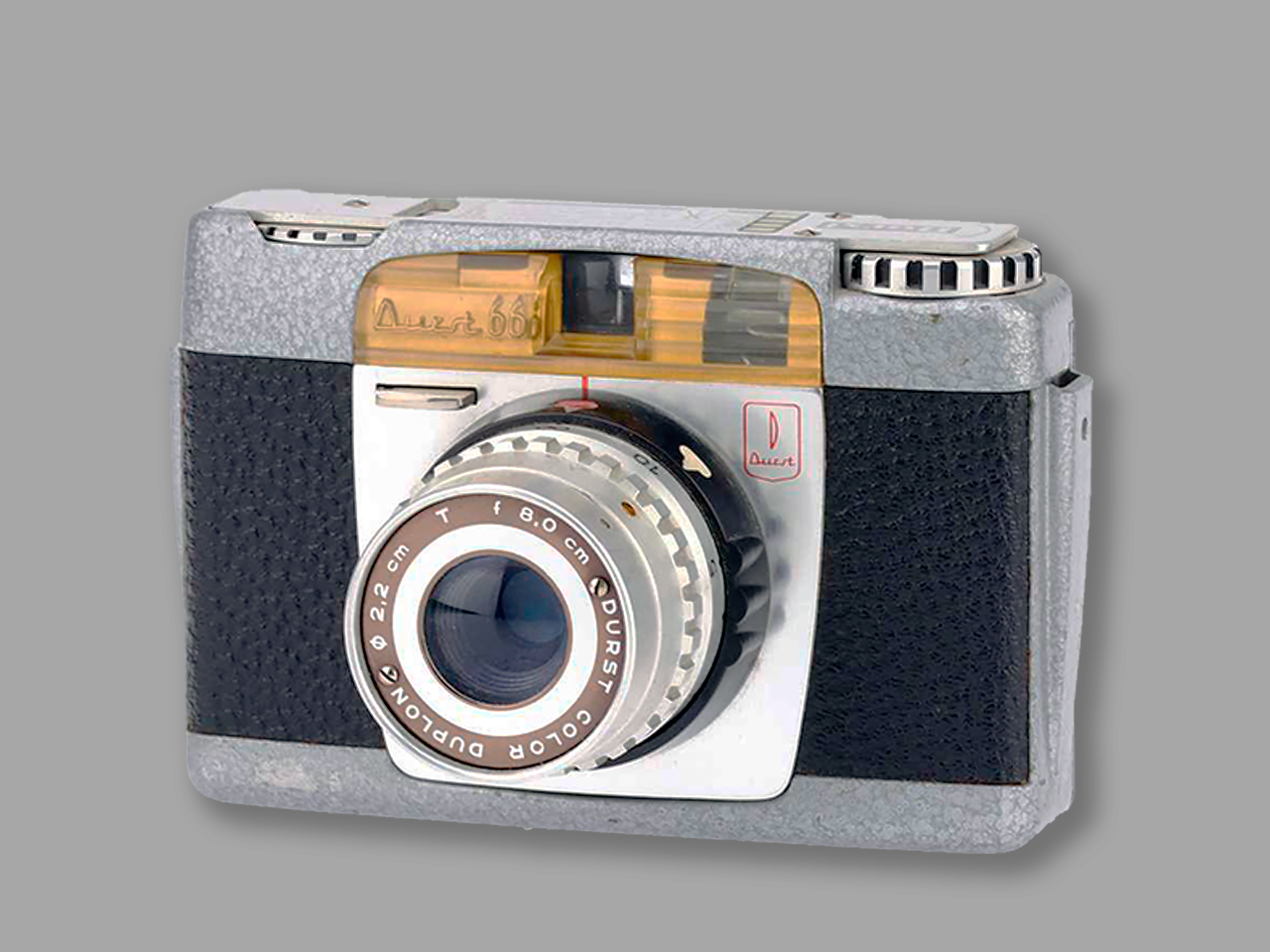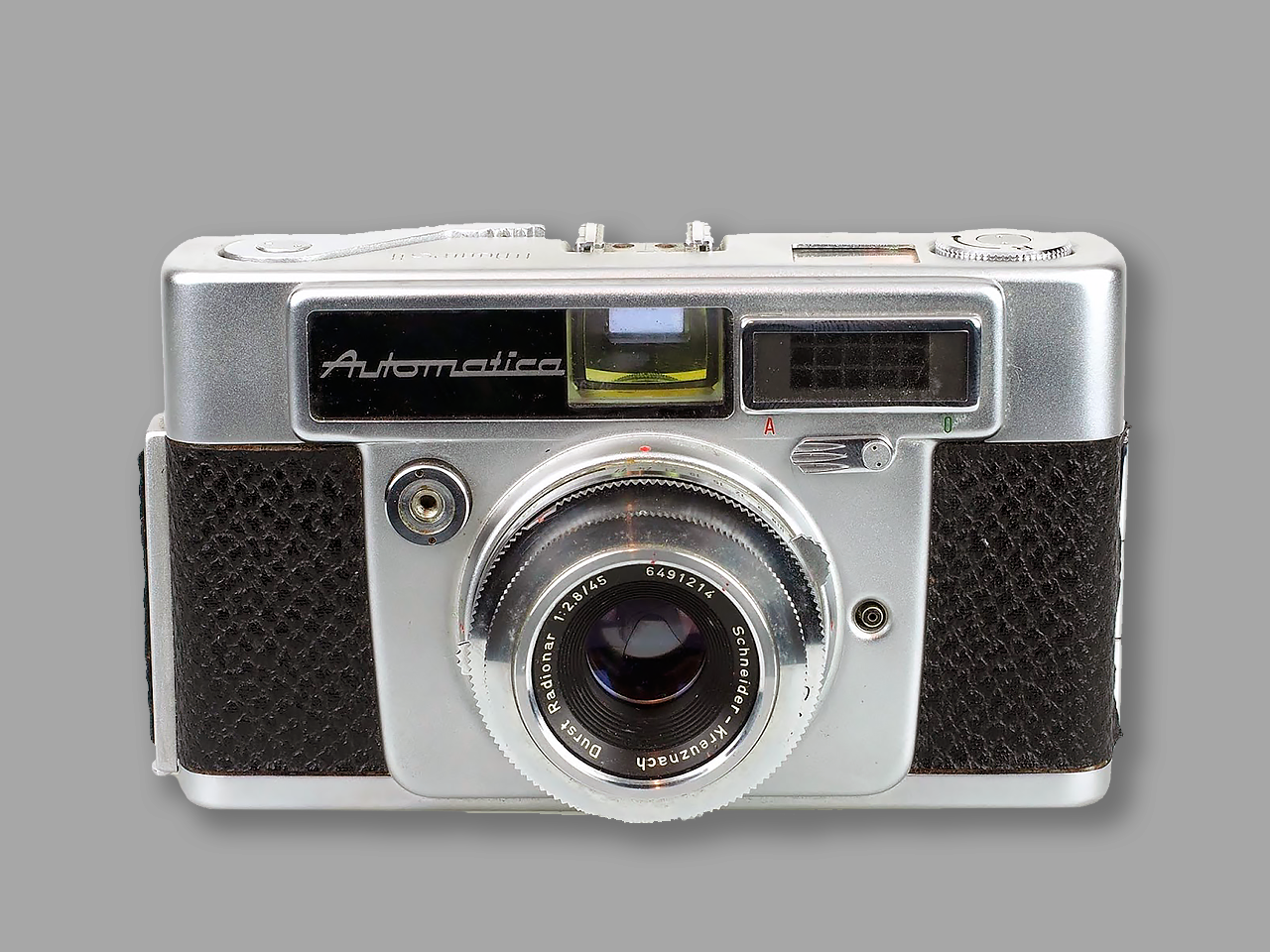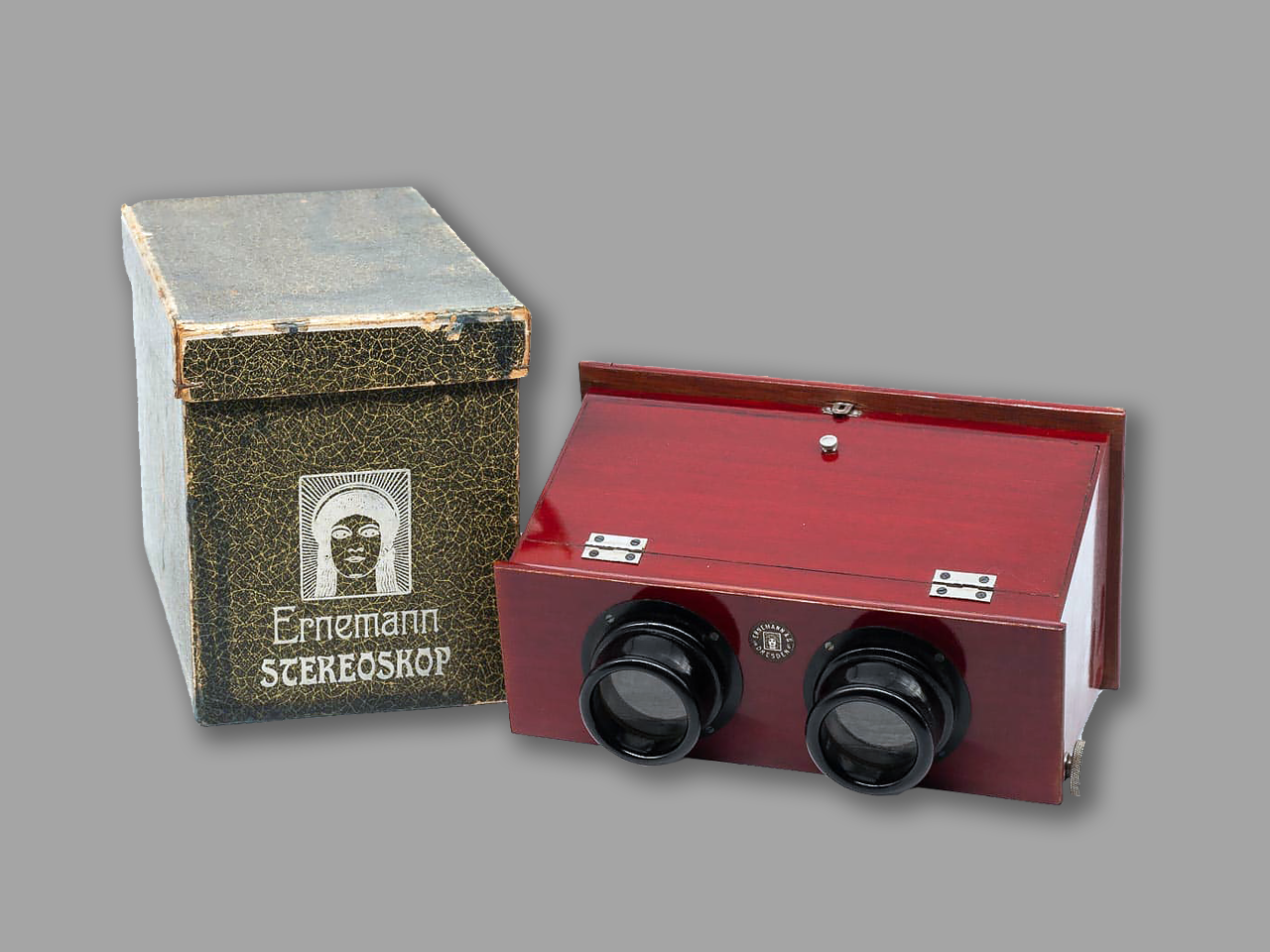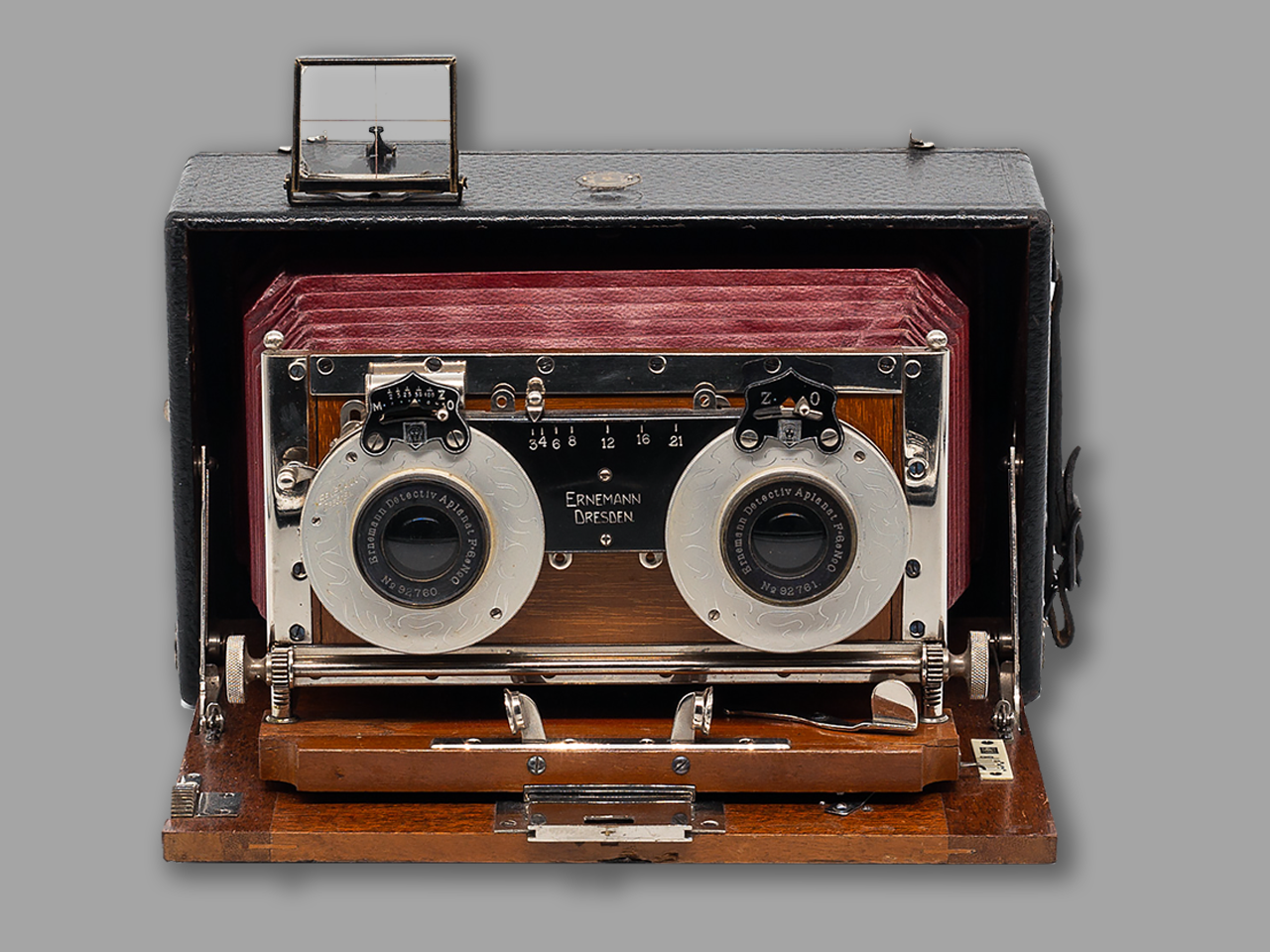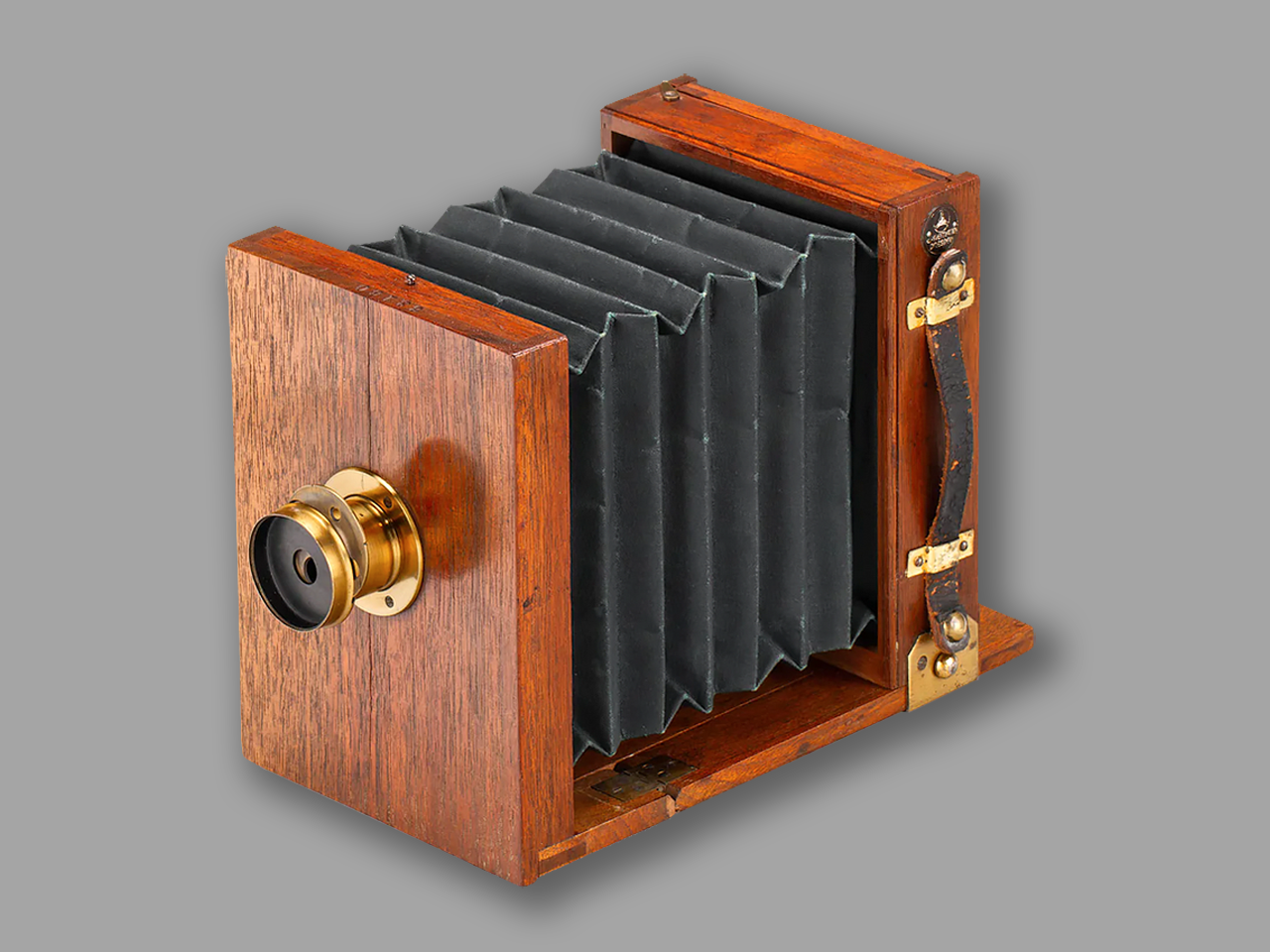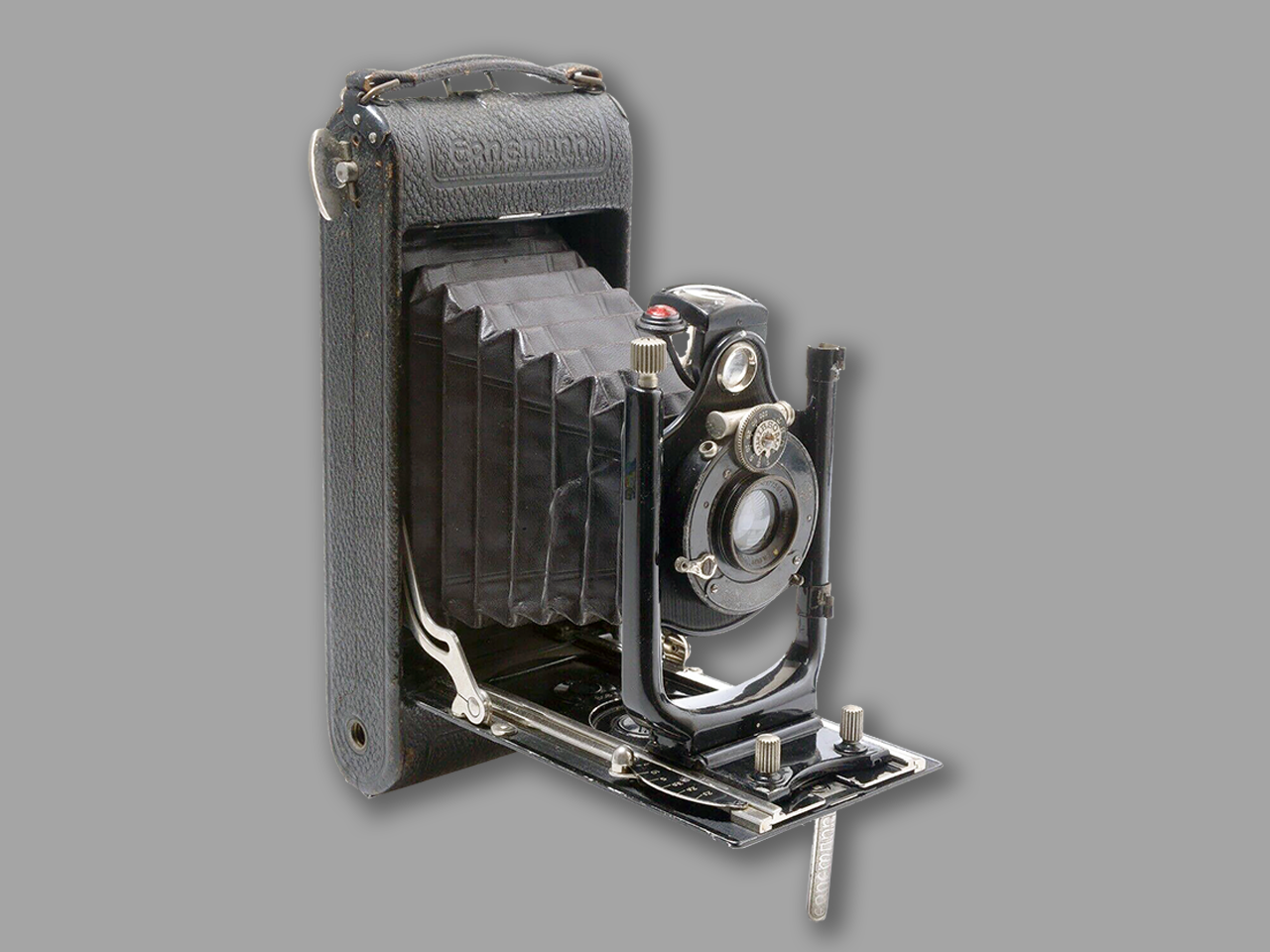Some of the following companies that manufacture(d) photographic material have already passed by in other parts of the site.Here you will find an overview of companies that marketed photographic material in the nineteenth and twentieth centuries.More is usually known about the best known or the most influential companies than about the lesser known ones; therefore they will be discussed more extensively than others.
The emphasis in this part of the site is more on the ups and downs of the company as such, while in other chapters the emphasis was on the product or on the man or woman who founded the company. The order of all companies is alphabetical.
Below are the names of the companies as will be discussed in this or any other chapter. By clicking on a name (so not on the bullet in front of it), you go directly to that part on this page where the manufacturer in question is located. Scrolling is also possible of course, but this service helps you to get to the desired manufacturer in question much faster.
Due to the fact that this introductory page has become much longer than originally planned and desirable due to the large number of manufacturers, we strongly advise you to use the name service below to go to the manufacturer of your choice on this or any subsequent page.
- General Introduction
- ADOX
- Agfa (see also Gevaert)
- Altissa
- Amaloco
- Ansco Camera Co (see also GAF)
- APM/APeM (see also Soho)
Amalgamated Photographic Manufacturers Ltd - Argus Camera Co, Ann Arbor Michigan
- Arsenal (see Kiev-Arsenal)
- Artima Export Ltd (see also Truvox)
- Asahi Pentax
- Bencini
- BOLCo and E Elliott Ltd
(abbrev. forThe British Optical Lens Company) - Carl Braun Kamera-Werk
- Canon Inc.
- J.T. Chapman, Manchester
- The Chicago Cluster of Companies
(consisting of 56 companies ) - Chinon
- Concord Camera Corp.
- K.G. Corfield & K.G. Corfield (Sales) Ltd.
- Coronet Camera Company
- Cosina Company, Ltd.
- Dacora
- Dixons
- Durst
- EHO-Altissa company (See Altissa)
- E Elliott Ltd and BOLCo
(abbrev. for The British Optical Lens Company) - Ellison Kamra
(see also QRS Devry Kamra Company) - ELOP
- Ensign Ltd.
(distribution Company of Houghton-Butcher) - Ernemann-Kamerawerke AG
- Expo Camera Company
- The FED Company
- Ferrania
- Fisher-Price
- Fodor
- Foitzik-Kamerawerke
- C.F. Foth
- Fototecnica
- Franka Kamerawerk –
- Fujica (Camera Division of Fujifilm)
- Fujifilm (brief history)
- Futura
- GAF (see also ANSCO)
(abbrev. for General Aniline & Film) - Louis Gandolfi
- Herbert George Company
- Gevaert Photo-Producten N.V. (see also AGFA)
- Girard et Cie
- GNOME
- GOERZ
- GOMZ (LOMO)
- Graflex (Folmer & Schwing)
- Great Wall Plastics Co
- W. Haking Enterprises Ltd.
- Hanimex
- Hasselblad
- Healthways
- Houghton–Butcher Manufacturing Co (See also Ensign Ltd. and Ross-Ensign Ltd.)
- R.F. Hunter Ltd.
- ICA AG
- Ihagee (Exakta)
- Ilford
- Imperial Camera Corporation
(see the Herbert George Company story) - Jos-Pe
- Kamera-Werkstätten Guthe & Thorsch
- Keystone
- Kiev Arsenal
- KMZ
- Kochmann
- Kodak USA (incl. Australia, Canada, France, Germany & the UK)
- Konica-Minolta (Konishiroku)
(see also Minolta) - Kowa
- Krügener
- Kürbi & Niggeloh (Bilora)
- Kyocera (Yashica, Contax)
- Lancaster
- Leitz
- Lensless Camera Manufacturing Company
- Linhof
- Lipca (see also Richter-Tharandt)
- LOMO (see GOMZ)
- Loreo
- Mamiya
- Meopta Optotechnica
- Mimosa AG
- Minolta (see also Konica-Minolta)
- Minox Company
- Miranda (Orion)
- MMZ-BeLomo
- Motodori (Condor)
- Dr. August Nagel Kamera Werke
- Neidig Kamerawerk
- Nemrod-Metzeler (See Healthways)
- Nettel
- Nikon Company
- Nimslo Corporation (see also Nishika)
- Nishika Optical Systems (see also Nimslo)
- Noblex (See also K-W Guthe & Thorsch)
- Olympus Company
- ORION (see Miranda)
- ORWO
- Ottico Meccanica Italiana (OMI)
- Paterson Products Ltd.
- VEB Pentacon Dresden
- Pentax (See Asahi Pentax)
- Petri
- Photavit (Bolta)
- Plaubel
- Polaroid
- Photo Porst
- Karl Pouva – VEB Fototechnik Freital (see also Woldemar Beier)
- Purma Cameras Ltd.
- QRS Devry Kamra Company (see also Ellison Kamra)
- Foto-Quelle
- Rectaflex
- VEB Rheinmetall Büromaschinenwerk
- Richter-Tharandt (see also Lipca)
- Ricoh
- Rollei Germany
- Rollei Singapore
- Ross-Ensign
(continuation from Ensign Ltd.) - Ro-To Company
- Sea&Sea-Sunpak
- Shanghai Seagull
- Sida-Fotofex
- Sigma
- Soho Ltd (see also APM)
- Standard Cameras
- Steinheil
- Stenopeika
- Thornton-Pickard
- Topcon (Tōkyō Kōgaku)
- Tougodo Company
- Traid Corporation
- TRUVOX (see also Artima Export)
- Tura AG
- Universal Camera Corp.
- Vivitar
- Voigtländer
- Vredeborch
- Welta
- Werra (C. Zeiss Jena)
- Wirgin
- Kamera-Fabrik Woldemar Beier (see also Karl Pouva)
- Hermann Wolf GmbH
- Wünsche
- Yashica (see also Kyocera)
- Zeiss Ikon AG
- Zion
- Zunow (Teikoku Kōgaku)
COMPANY NAMES:
1946 – 1954: Dangelmaier & Co.; 1954: DACO – Dangelmeier & Co.; 1960: Dacora – Kamerawerk Dangelmaier & Co.; 1969: Dacora Kamerawerk GmbH; 1972: Dacora Kamerawerk Nürnberg GmbH; 1972: the company was formally dissolved.
COMPANY ADDRESSES:
1946 – 1954: Reutlingen located just south of Stuttgart; 1970: Munich; 1972: Grafenwohr near Nuremberg.
Dacora was a founded by Bernhard Dangelmaier as Dangelmaier & Co. shortly after the end of World War II in the city of Reutlingen located just south of Stuttgart.
The company enjoyed early success and by 1960, Dacora production reached the two-million-unit mark. Cameras produced by the company were not limited to those bearing the Dacora name but were also manufactured on behalf of other companies such as Panorama, Porst, Ringfoto and Universa (all Germany), Ferrania (Italy), Ilford (Great Britain), Lumiere (France), and others.
In 1969, the company was purchased by Leach Relais und Elektronik GmbH and renamed as Dacora Kamerawerk GmbH. The company suffered some financial difficulties in the early ’70s and moved to Munich where it struggled to survive.
Then, in 1972, the company was acquired by Josef Weber KG and relocated to Nuremberg. Dacora Kamerawerk Nürnberg GmbH began assembling cameras in a new factory in Grafenwohr near Nuremberg from half-finished parts they had acquired with the purchase of the former Dacora company.
The development of the Weber SL-75, a high-quality 35mm SLR with Zeiss lenses in an improved Contarex-bayonet and based on the Zeiss Ikon SL 725 prototype came to nothing because the company simply lacked the resources.
However, due to continuing financial mismanagement, Weber stopped camera production, dropped the Dacora name and went back to making slide projectors and dissolved formally the Dacora company.
- The Daco is a medium format bakelite box camera with slightly curved sides and rounded corners for 120 film;
- The Daci is a medium format metal box camera for 120 film, available in black, green, red and gray);
- The Dacora I and II is a medium format folding camera for 120 film introduced in 1952;
- The Digna is a medium format film viewfinder camera manufactured between 1954 – 1959 (also manufactured for Ilford as the Ilford Sporti);
- The Dacora 66 is a medium format film viewfinder camera introduced in 1962 (also manufactured for Ilford as the Ilford Sporty 6);
- The Dignette is a 35mm film viewfinder camera introduced in 1964. (various models were made) they were also manufactured for Ilford as the Ilford Sportsman;
- The Super Dignette is a 35mm film viewfinder camera produced between 1956 – 1962(four models were available);
- The Matic and the Matic 4D (a very special 35mm viewfinder camera with 4 shutter release buttons, each for a special subject distance);
- The Dacors CC is a 35mm film viewfinder camera introduced in 1962 (also manufactured for Ilford as the Ilford Sportsmaster Manumatic);
- The Dacora D101 and D101F is a 35mm viewfinder camera introduced in 1964, suitable for special Agfa-Rapid cassettes);
- The Dacora D202 is a 35mm viewfinder camera introduced in 1964, suitable for special Agfa-Rapid cassettes);
- The Dacora D303 is a 35mm viewfinder camera introduced in 1965, suitable for special Agfa-Rapid cassettes);
- The Dacora D404 is a 35mm viewfinder camera introduced in 1965, suitable for special Agfa-Rapid cassettes);
- The Instacora is a 126 film instamatic viewfinder camera introduced in 1966 (there were 4 models, which were also available for Ilford).
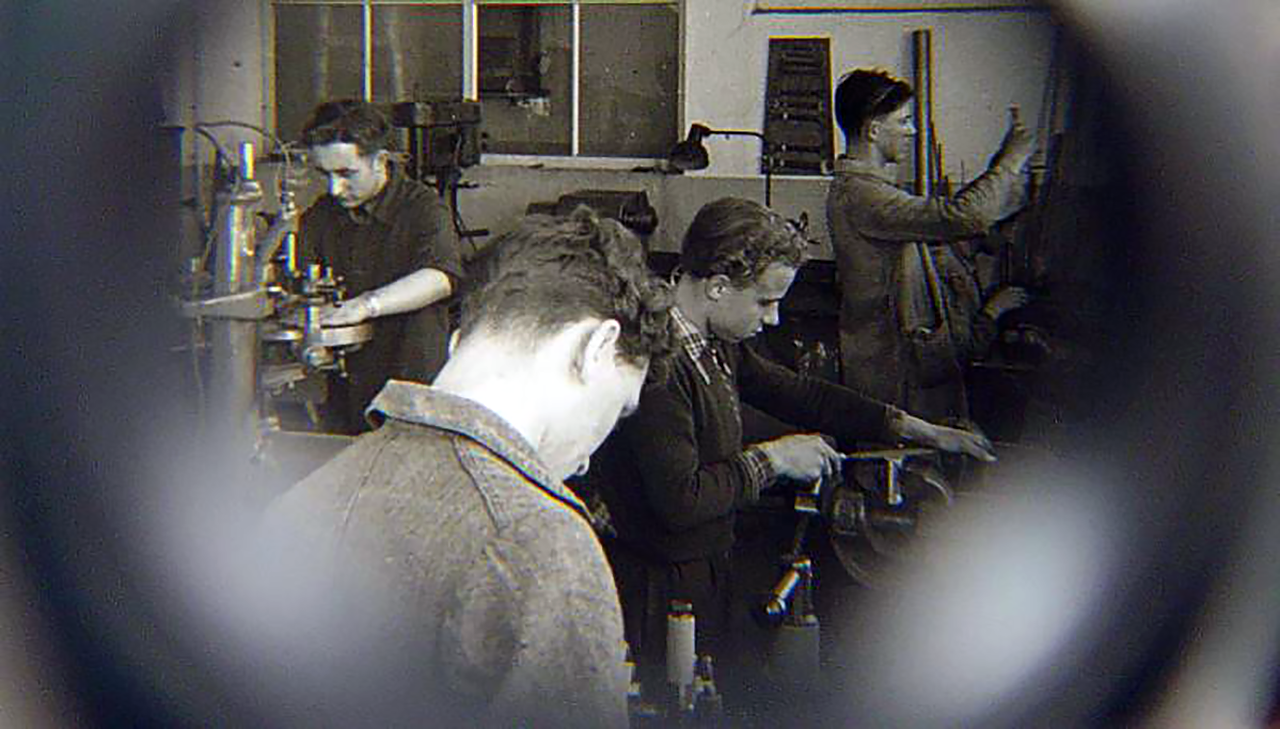
An atmospheric picture from the Dacora – Kamerawerk Dangelmaier & Co. factory in the city of Reutlingen located just south of Stuttgart.
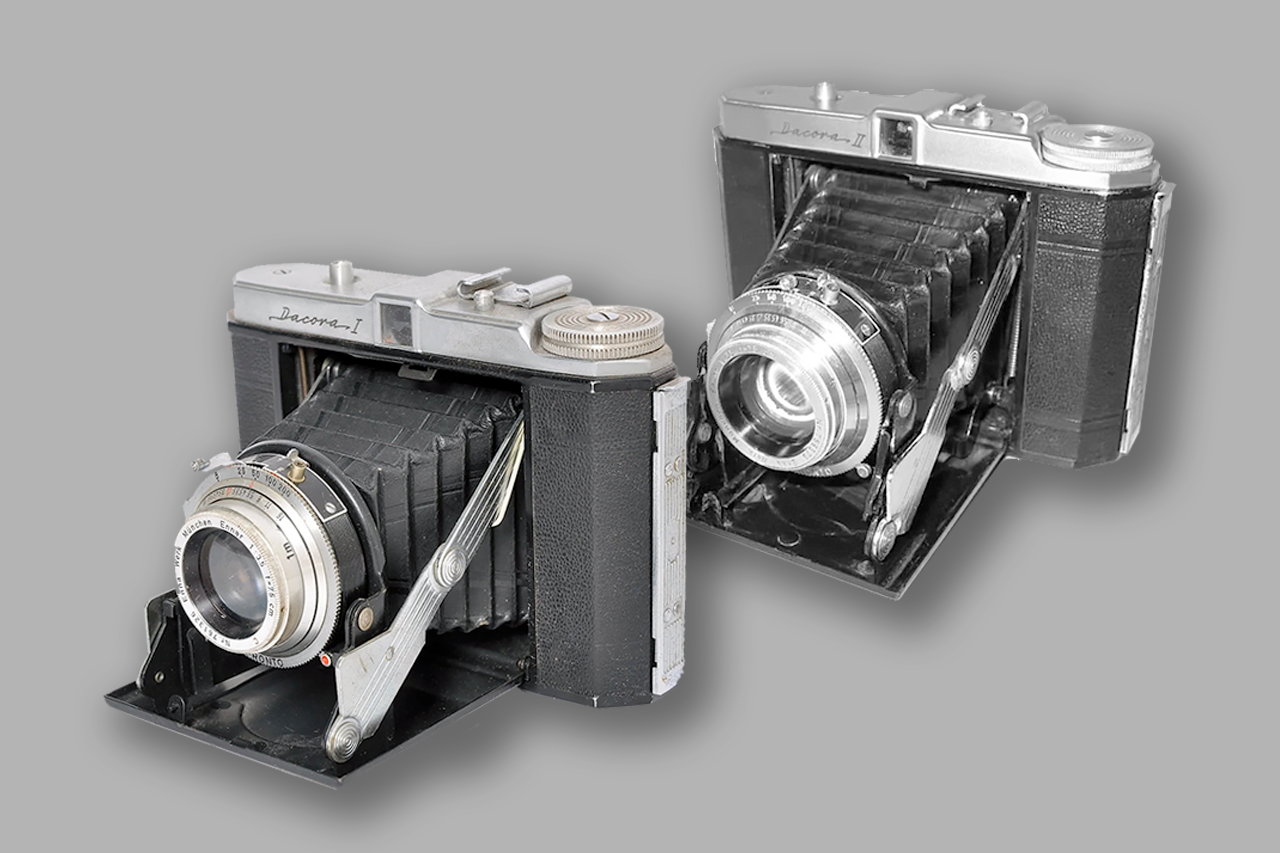
Dacora I is a medium format folding camera made by Dacora and introduced in 1952. It is in the Dacora 120 film folding cameras series.
The Dacora II was a horizontal folding camera taking 6x6cm exposures on type 120 film rolls. It was made in Germany by Dacora, c.1952. It is in the Dacora 120 film folding camera series. It was similar to the Dacora I, but with more features.
FOUNDER: Charles Kalms
COMPANY NAMES:
1937: Dixon Studios Ltd.; 1953: Dixon Camera Centre; 1962: Dixons Photographic Ltd.; 1984: Dixons Group.
COMPANY ADDRESSES:
1937: Southend-on-Sea, near London, England; 1945: Edgware suburb North London.

Dixons’ origins can be traced to the 1930s, when Charles Kalms, a Jewish immigrant from Eastern Europe, founded a portrait photography studio in London. In 1937 he and a friend decided to set up a photographic studio at Southend-on-Sea, not far from London. They incorporated the business as Dixon Studios Ltd., choosing the name Dixon out of a telephone directory in preference to their own. Kalms’s friend gave up his share in the business within two years, and Kalms took full control, while continuing to run another business at the same time.
During World War II, when so many men and women were separated from their families, there was a great demand for portrait photographs, and the business flourished. By the end of the war the company had expanded to a chain of seven studios in the London area. After 1945, however, the market contracted as fast as it had grown, and Dixon was reduced to a single studio in the North London suburb of Edgware.
In an effort to boost sales, Charles Kalms began to sell cameras and other photographic equipment, and the studio gradually turned into a shop. This changeover gathered pace when Charles Kalms’s son Stanley joined the business in 1948. Although only 17, he proved to be a natural salesman with remarkable ambitions. A onetime colleague recalled that Stanley Kalms sold some cameras with great success even before he had discovered how to load the film. The retail side of the business grew quickly, and father and son agreed to concentrate on developing it. By 1953 the company was able to start opening branches again, this time under the name Dixon Camera Centre.
In those early postwar years, few people in Britain could afford to spend much on their hobbies, but interest in photography grew fast. Dixon met this situation by selling new and used goods at attractive prices and by offering credit terms. At an early stage it started advertising, at first in photographic magazines and local papers, then in national newspapers. In this way it built up a large mail-order business as well as retail sales. By 1958 it had 60,000 mail-order customers, and the shop business had grown to six branches. In that year Dixon moved its head office to larger premises, still in Edgware. The company then employed almost 100 people.
Cameras from the far east
The company showed unusual enterprise in buying as well as selling. In the 1950s the photographic market in the United Kingdom was dominated by British, U.S., and German manufacturers, and the law at that time allowed manufacturers to dictate the prices at which their products were retailed. This did not suit Dixon’s competitive style, and Stanley Kalms began to look elsewhere for manufacturers who would supply him directly at low prices.
He began regular buying trips to the Far East and by hard bargaining and bulk buying was able to import goods at prices that enabled Dixon to offer unbeatable value to its customers. In Japan he found manufacturers willing to supply products made to Dixon’s specifications. At that time Japanese goods were not highly regarded in Europe, so Dixon marketed the goods under the German-sounding name of Prinz.
Dramatic Growth in the 1950s Culminating in 1962 IPO
By the end of the 1950s incomes in Britain were rising sharply, and the market for photographic goods doubled in value between 1958 and 1963. Camera design was improving, color film prices were falling, and a craze for home-movie kits–camera, projector, and screen- swelled demand.
Dixon, having established a reputation for good value and quality, was one of the chief beneficiaries. Its profits rocketed from £6,800 in 1958 to £160,000 in 1962, and in that year the company went public under the new name of Dixons Photographic Ltd. The Kalms family retained voting control, with more than three-quarters of the shares in their hands at this time, but the shares released to the market proved highly popular.
At the time of the stock offering Dixons had only 16 shops, five of them in London, and with the help of the offering it acquired more. Two chains of camera shops, Ascotts, with 13 stores, and Bennetts, Dixons’ largest specialty competitor, with 29 branches, were bought in the next two years. Dixons also opened more shops from scratch, including one on a prime site near Marble Arch, London. By the end of 1964 the company had 70 shops and by 1969 it had more than 100.
Growth in profits was more erratic. Retail sales were depressed in some years by government action to restrict credit, and some of the company’s expansionary moves lost money in the short term.
In 1967 a large color film processing plant at Stevenage was purchased, the most up-to-date one in Europe at the time; it operated at a loss for a while before making a profit. Dixons also began to manufacture photographic accessories and display material and made substantial losses on this business before abandoning it in 1970.
Increase in Profitability
The key to Dixons’ next leap in profits, in the early 1970s, was its move into electronics retailing. This began very cautiously in 1967, when some audio and hi-fidelity units were put on sale in six branches as an experiment. They sold well and were soon introduced into all branches.
By 1970 Dixons had introduced its own Prinzsound brand. The next year, television sets were sold experimentally in 25 stores. They, too, were a great success, in part because the recent arrival of colour television had created a large television replacement market.
After that, Dixons introduced a host of new products in quick succession, including electronic calculators, radio/cassette recorders, music centres, and digital clock/radios. To make room for all these new products, the company had to enlarge its stores. In two consecutive years its total selling space was increased by 30 percent or more.
The effect of these developments on profits was dramatic. From £226,000 in 1970 – a bad year – profits soared to £828,000 in 1971, £2.3 million in 1972, and £4.9 million in 1973. The company had established itself in a new market with tremendous growth potential, and its reputation with the investing public, who by this time held the majority of its shares, stood high.
In fact, its next few years proved to be an unhappy period. This was partly because the economic climate changed for the worse in 1974, but chiefly because the company tried to buy its way into other new markets with less positive results.
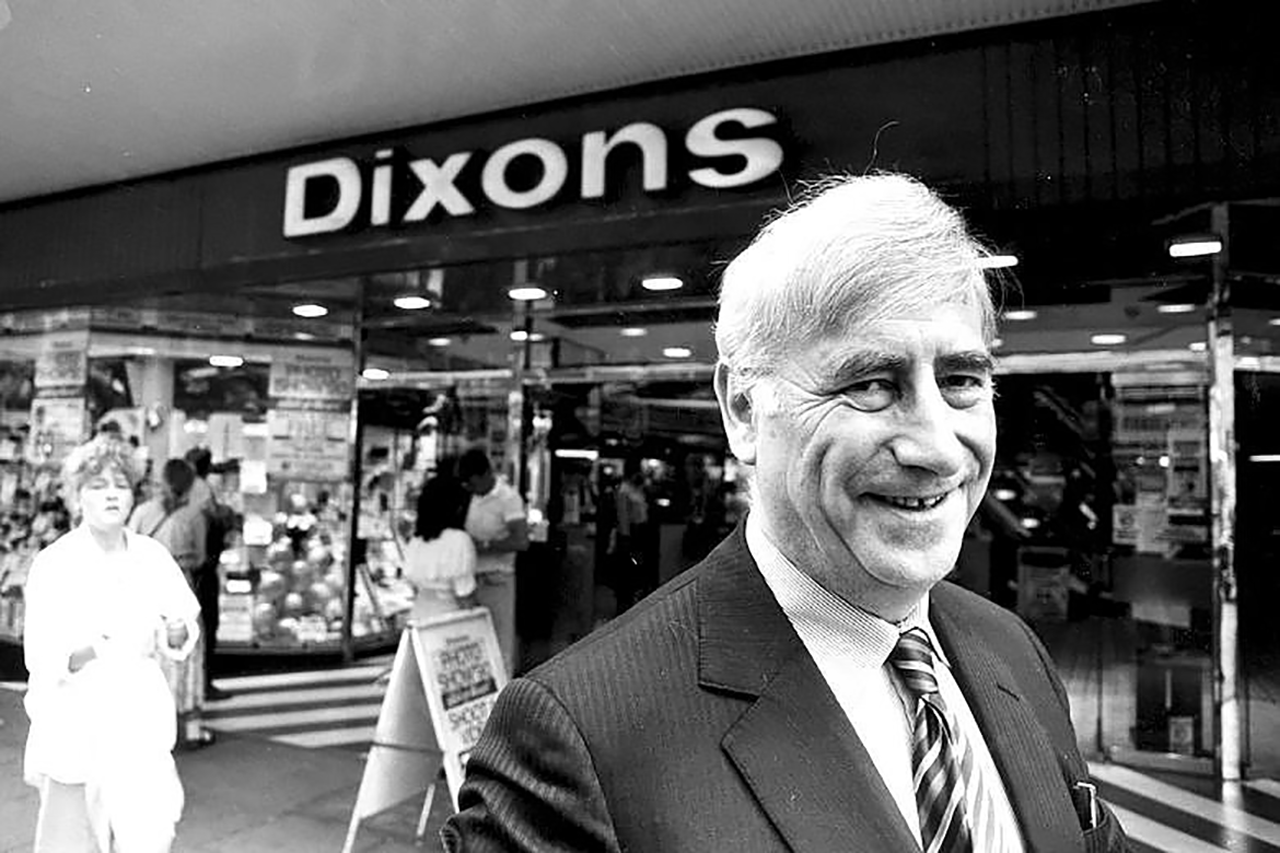
An ancient publicity pic from the archives, with Charles Kalms (founder of Dixons, and father of Stanley, now Lord Kalms)

Image of a Dixons store and delivery lorry in the 50s
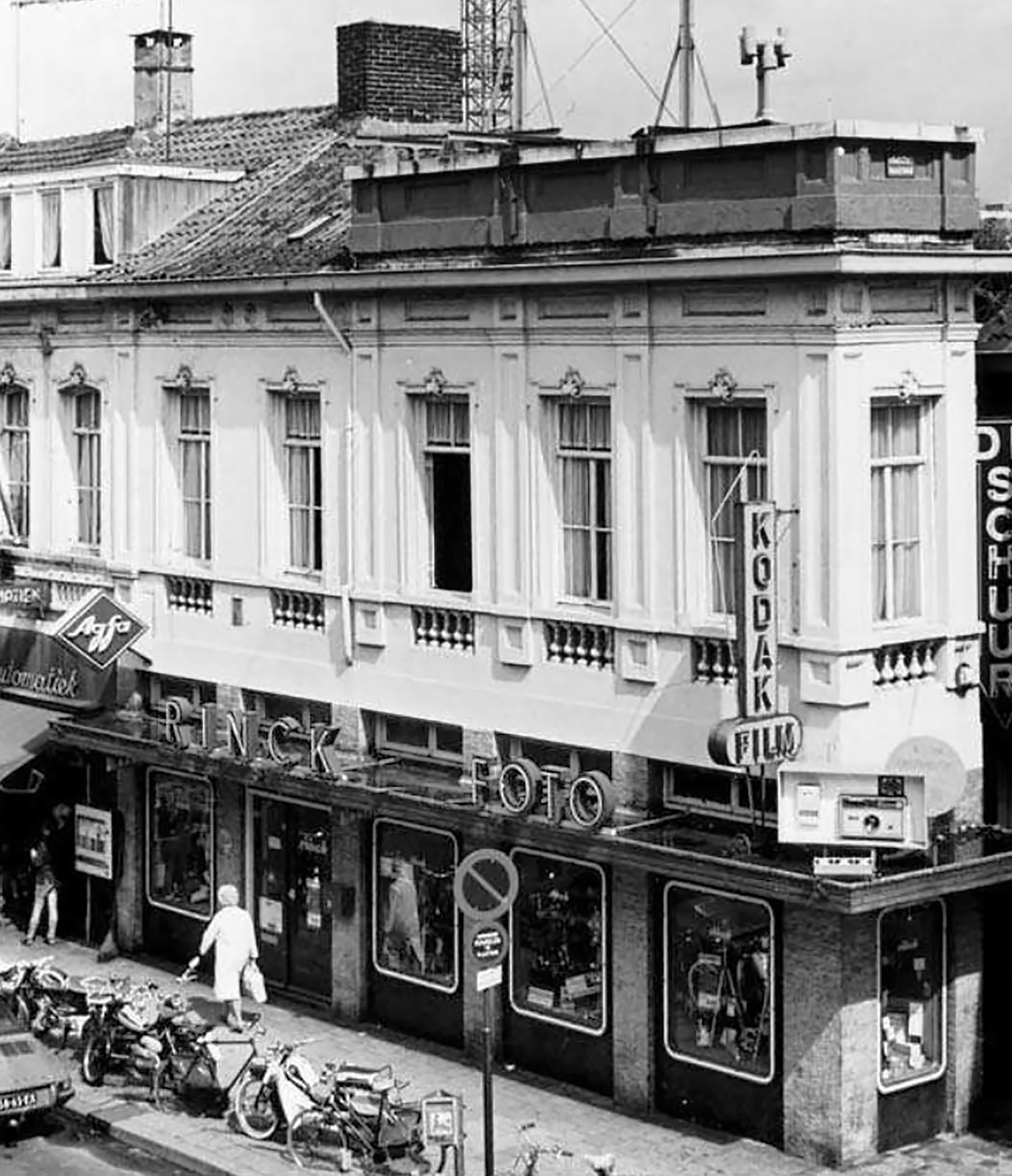
Here we see the then well-known photo shop Rinck on the corner of the Markt in Eindhoven; the photo dates from the second half of the sixties.
Forays into Foreign Markets in the 1970s
Dixons started to expand abroad in the early 1970s, at first with success. Through small marketing companies in Sweden and Switzerland, it found valuable new outlets for its own brand of products throughout Europe.
In 1972 it bought a large Dutch photographic and optical retail business, G.H. Rinck NV, a company with nearly 60 stores in The Netherlands, compared with Dixons’ 150 stores in the United Kingdom at that time. As in Britain, Dixons opened more branches and introduced more products, but the Dutch business never approached the U.K. stores in profitability and for two consecutive years incurred losses.
This experience deterred Dixons from further expansion in foreign markets for some years. Instead, it embarked in 1976 on a new form of expansion in the United Kingdom.
trying to find new ways to make a profit
With the hope of achieving a large increase in outlets for its goods at one stroke, it bought Weston Pharmaceuticals, a chain of 200 drugstores, for £11 million, together with a wholesale business supplying independent druggists.
The idea was to widen Weston’s range to include Dixons products, in the same way that Boots, originally a pharmaceutical company, had so successfully broadened its range to include other consumer goods. “Boots must be our model,” said Peter Kalms in the Investors Chronicle of January 30, 1976, soon after the takeover.
These hopes were never realized. It became apparent within a short time that Weston had serious problems within its existing business and that any major expansion was out of the question. Its profits declined, then turned to losses.
Dixons wrestled with Weston’s financial problems for four years in an effort to turn it around, but in 1980 decided to recoup what it could of its investment by selling all the drugstores. The wholesale business was kept for some years longer, but seldom produced a substantial profit.
Meanwhile, the struggle to save Weston’s retail business had left Dixons with a shortage of working capital, and this had led the company to sell G.H. Rinck in 1978.
Thus by 1980 two major investments had come to nothing, and the company’s reputation as a growth stock was tarnished. The recession of 1981-82 delayed Dixons’ recovery, with the result that its profits, after discounting inflation, showed no real growth for six years.
Reemphasis on Electronics Business in the 1980s
Dixons’ main electronics retailing business, however, continued to expand throughout this period. By 1982 the company had raised the number of its stores to 260 and increased their average size. New electronic products were introduced as they were manufactured, including home computers, video recorders, and digital watches.
By competitive pricing policies, Dixons won a sizable share of all these new markets. It launched a new house brand, this time with a Japanese name, Saisho. The photographic side of the business also continued to grow; its processing capacity was increased, and a property development unit was established successfully.
All of these investments paid off handsomely once Weston’s problems had been left behind and the recession ended. In 1984 Dixons’ profits jumped by 46 percent. On the strength of this fresh spurt of growth, the company made its biggest-ever takeover in December of that year. This time it chose a British company with a business closely complementary to its own, Currys Group PLC.
Taking over Currys Group PLC
Currys Group PLC (Currys) was a chain of 570 shops, selling refrigerators, freezers, washing machines, and electronics, including a television rental business. Although it owned twice as many shops as Dixons, Currys’ turnover was no greater, and its recent performance had been less dynamic. Nevertheless, it was a sound business with a good name, and Dixons had to pay £248 million for it. Kalms would later reflect that it was “one of the deals of the century.”
Currys was a much older business than Dixons. It began in Leicester in 1888 as a bicycle shop and, in the cycling boom of the 1890s, manufactured and sold bicycles. When its founder, Henry Curry, retired in 1910, his sons carried on the business–a partnership formed in 1897 as H Curry & Sons–and expanded it greatly. It ceased to manufacture, but developed into a nationwide chain of shops selling cycles, radios, baby carriages, toys, and sporting goods, and became a public company in 1927.
The second and third generations of the Curry family continued to manage it, however, until the Dixons takeover. By that time the company had ceased to deal in cycles and sporting goods, but had become one of the leading retailers of domestic electric appliances of all kinds. The acquisition included Currys’ Mastercare service division and the Bridgers chain of discount electronics and appliance stores.
The merger of Dixons and Currys, under the name of Dixons Group, put the company into the top echelon of British retailers. Even after selling the television rental shops, the new company had more than 800 stores in the United Kingdom and its staff had grown to 11,000. Currys retained its separate identity within the company, but its business methods were brought more into line with Dixons’. In the boom conditions of the mid-1980s, the combination brought further large increases in profits.

Currys ad in the Daily Mirror of Thursday December 30, 1982
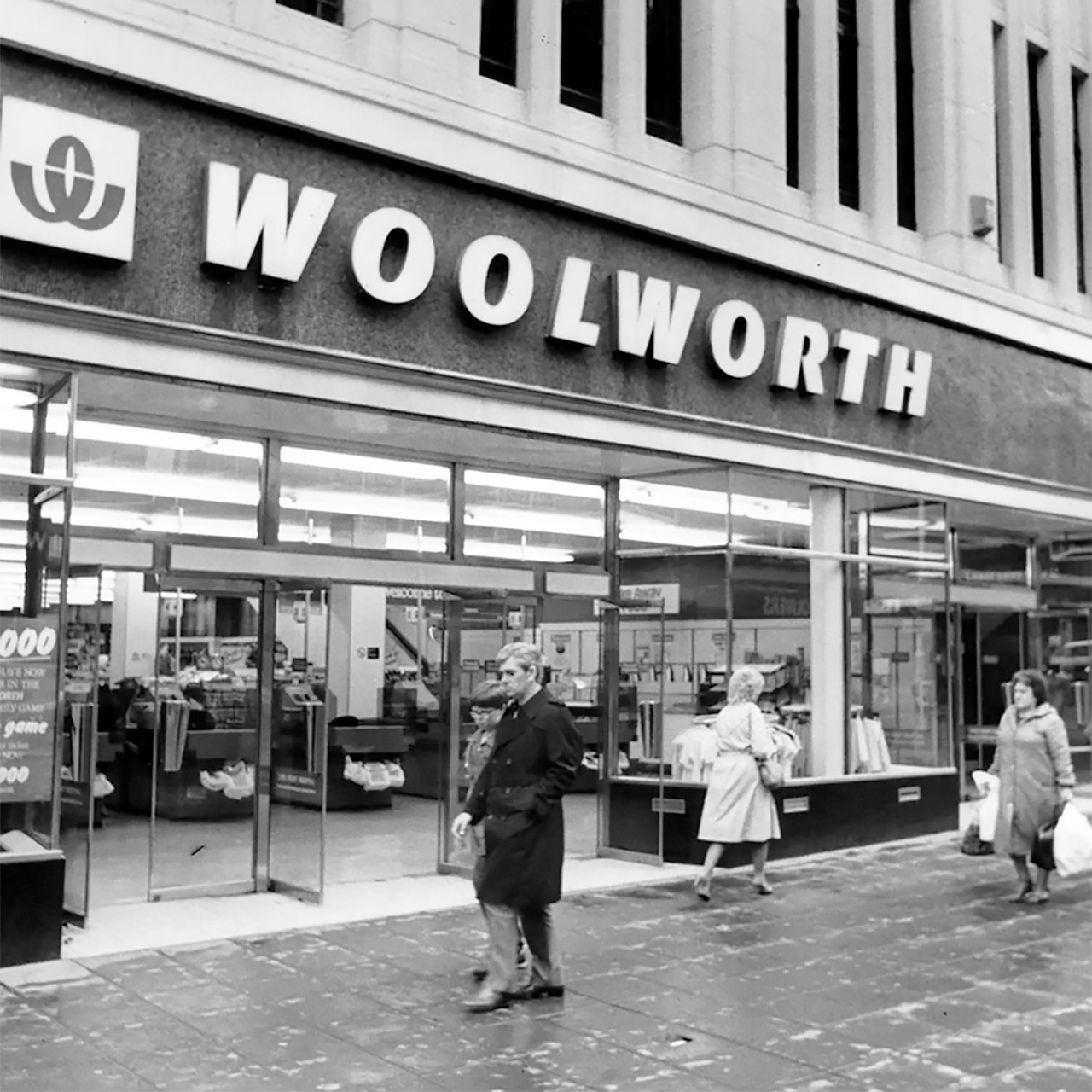
Woolworth, Northumberland Street, Newcastle, 1984.
Flurry of Acquisitions in the Late 1980s
Stanley Kalms, however, was not content even with this empire. In 1986 he launched a bid for Woolworth Holdings, the British branch of Woolworth. The U.S. parent had sold its 52 percent controlling stake in this to a consortium of British investors in 1982, and Woolworth Holdings was still struggling to raise its profits after a long period of stagnation. Kalms believed that Dixons could do the job better, as well as obtain new outlets for its own merchandise. In the end, Dixons’ £1.8 billion bid was turned down by the institutional investors who controlled most of Woolworth Holdings’ shares.
Thwarted in this plan, Dixons looked around for other investment opportunities. In 1986 it acquired the 340-shop Supersnaps chain, the leading U.K. specialist in retail film processing. Then, in 1987, it made two major acquisitions in the United States, the Silo and Tipton electrical and appliance retailing chains. Silo Inc., with 119 stores and 2,000 employees, was the third largest electrical retailer in the United States and was strong in the East and Midwest. Tipton Centres Inc. was based in St. Louis and had 24 other stores.
With these acquisitions Dixons controlled more than 1,300 stores worldwide, with 3.5 million square feet of selling space. By 1991 it doubled the number of its U.S. outlets, gaining a presence on the West Coast as well, and the worldwide store total had risen to nearly 1,450.
But size did not necessarily equate with success. Dixons’ pretax profits peaked at £103 million in 1988, and when recession softened the consumer electronics market, profits started to decline. As a result, Dixons found itself at the receiving end of a takeover bid in 1989. The bidder was none other than Woolworth, by then renamed Kingfisher, a company that had made a strong recovery since its 1986 financial difficulties. Dixons was saved from this threat by the Monopolies and Mergers Commission, which ruled that Dixons and Kingfisher as a unit would have an excessive share of the electrical goods market. Kalms later estimated that the two companies wasted £40 million in fees on the bid and counterbid.
The 1990s and Beyond
The Silo acquisition proved, as one analyst put it, “disastrous,” racking up millions in losses under Dixons’ management. In 1993, the U.K. parent sold the chain to America’s Fretter Inc. in exchange for a 30 percent stake in the acquiring company. Dixons also divested its Supersnaps subsidiary to Britain’s Sketchley plc during this period.
Hoping that it had stanched the flow of red ink, Dixons refocused on the domestic market, acquiring Vision Technology Group Ltd. (VST) in 1993. VST had been formed just two years’ prior via the amalgamation of several mail-order computer companies in 1991. The merged firms opened their first retail outlet, PC World Superstore, that same year, offering computers, peripherals, software, and accessories.
Following the acquisition, Dixons divested VST’s mail-order operation and concentrated on a dramatic expansion of the four-store chain. By the end of 1996, there were 25 PC World outlets throughout the United Kingdom. Dixons also hatched a new member of the retail family in 1994, launching The Link stores, specializing in retail communications services and products. By the end of 1995, this new chain boasted 48 outlets throughout the United Kingdom.
After four decades at the helm, sexagenarian Stanley Kalms began to relinquish many of the day-to-day operations of his retail empire to a new CEO, John Clare, in the late 1980s and early 1990s. Remaining as chairman, Kalms continued to oversee strategy. Although earnings remained fairly flat at £1.9 billion in the early 1990s, pre-tax profit rose from £76.7 million in fiscal 1992-93 to a record £135.2 million in fiscal 1994-95.
Keeping Pace with the Digital Age: 1996-2002
Having solidified its market position on the domestic front, Dixons was once again able to turn its attention to building its presence abroad. In January 1997, not long after opening the first Dixons store in Ireland, the company acquired the retail arm of Dublin-based Harry Moore Ltd. In addition to giving Dixons an additional six outlets in Ireland, the deal lent some critical momentum to its overall expansion strategy, enabling it to permeate the Irish market in a very short span of time.
A more significant acquisition came in December 1999, when Dixons successfully outbid rival Kingfisher plc for Norwegian electronics retailer Elkjop. Elkjop, which owned 154 stores throughout Scandinavia and in Iceland and claimed a 12 percent share of the overall Nordic market, in addition to 30 percent of the market in Norway, was clearly a highly coveted prize, and signified a substantial victory for Dixons.
Whereas Kingfisher was already well established in a number of European countries – it owned the Darty and But chains in France, and the German computer supplier Promarkt – the purchase of Elkjop marked Dixons’ official entry into continental Europe.
As part of the company’s broader European strategy, Dixons planned to follow up this deal by introducing two of its other retail concepts, PC World and the Link, into the Scandinavian marketplace. By July 2001, Dixons had established a retail presence in Hungary, Spain, and Portugal, in addition to acquiring a 15 percent stake in Kotsovolos, the largest electronics seller in Greece. Amidst this flurry of activity overseas, Dixons continued to strengthen its domestic business, buying the Byte Computer Stores chain from Specialist Computer Holdings in April 1998.
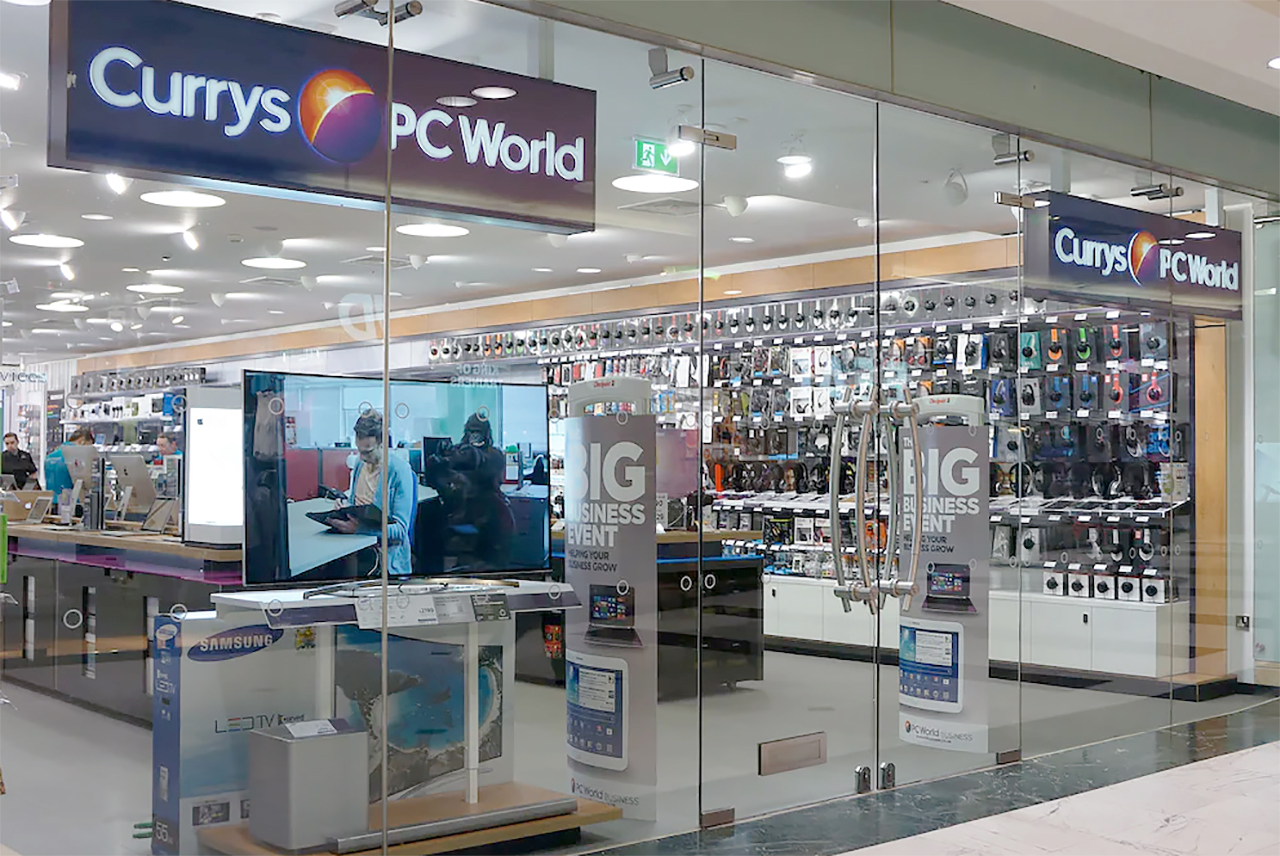
Currys PC World is looking to boost sales of mobile devices from its bricks and mortar stores.
The acquisition of the Byte Computer Stores chain, gave Dixons an additional 16 retail outlets in the United Kingdom. At the same time, Dixons was forging a number of important partnerships with manufacturers.
In October 1998 the company reached an agreement with Apple to carry iMac computers in its PC World stores, as well as in select Dixons and Currys locations. The following year Dixons reached an agreement with 01 Communique Laboratories Inc., a communication software company based in Canada, to distribute the company’s unified messaging software in Europe.
During this period the company also made its first foray into the Internet industry. In February 1998 the company launched Freeserve, the first non-subscription Internet provider in the United Kingdom. The company’s innovative billing system rates–comparable to local telephone charges, based on per-minute use, with no monthly fee–proved very popular in Britain, and by July 1999 Freeserve had become the largest Internet service provider in the country, with more than 1.25 million subscribers.
That same month, the provider joined with World Telecom plc to create a web-based email service. By January 2000, Freeserve’s subscriber base had increased to 1.57 million. In the end, however, Dixons decided that its Internet business was leading it too far away from its core interests, and by mid-2000 it sold its stake in Freeserve. Once again devoting all its energy toward its consumer electronics business, by July 2001 Dixons was enjoying pre-tax profits of $647.1 million, compared with $472.1 million the previous year. With sales of cell phones and digital cameras booming, the company had every reason to feel confident about further increased profits in the future.
| ORIGINAL CAMERA | SOLD AS |
| Halma Flex I | Prinz Flex |
| Halma Flex IIB | Prinz Auto |
| Prinz 110 Eletro | |
| Cosina 35 | Prinz 35-E |
| Chinon 35EE (GAF Memo 35 EE) | Prinz 35-EE |
| Prinz 35 ER | |
| Halma 44 | Prinz 44 |
| Prinz Candide 126 | |
| Prinz Junior 35 |
| ORIGINAL CAMERA | SOLD AS |
| Halma 44 | Prinz Lightmatic 110, 200 & 400 Tele |
| Regula Automatic L | Prinz Mastermatic |
| Halina Paulette Electric | Prinz Mastermatic III |
| Halina Paulette EE II | Prinz Mastermatic V |
| Vredeborch Felicette | Prinz Pilot |
| Regula Sprinty | Prinz Pilot II, Prinz Pilot E, Prinz Pilot III |
| Halina 35-600 | Prinz Saturn 35 Auto (40/2.8, CdS meter, zone focus) |
| ORIGINAL CAMERA | SOLD AS |
| Zenit B | Prinzflex 500 |
| Zenit E | Prinzflex 500E |
| Chinonflex TTL | Prinzflex TTL |
| Cosina Hi-Lite | Prinzflex Super TTL |
| Chinon M-1 | Prinzflex M-1 |
| Mamiya EE Merit | Vulcan EE |
| Miranda-badged | 35mm SLRs | |
| MirandaMS-1 | Miranda MS-1 Super | |
| Miranda MS-1N | Miranda MS-2 Super | |
| Miranda MS-3 | Miranda Memoflex | |
COMPANY NAMES:
1936: Durst Phototechnik AG Company;
SUBSIDIARIES:
1953: Founding of the German Durst GmbH in Munich; 1972: Founding of Durst (UK) Ltd. in Epsom, England; 1976: Founding of Durst North America Inc. situated in Temple, Arizona; 1999: opening of a new production site in Lienz/East Tyrol, Durst Digital Technology GmbH; 2002: Durst has own distribution companies in Germany, England, the USA and France; 2005: Founding of the distribution company Durst Image Technology Latin America S.A. in Mexico City.
COMPANY ADDRESSES:
1936: Brixen; 1999: Lienz.
It began with 2 brothers from Brixen, Julius and Gilbert Durst, whose inclination toward photography did not come without reason. Their father was a painter, who always had a certain soft spot for photographs. Their mother, who was the daughter of an engineer, had her own darkroom equipment. In addition, most of their relatives were photo enthusiasts.
At an early age, the brothers developed immense interest for the field, and along with this interest, they possessed remarkable technical talent. In their youth, the brothers designed and made hunting weapons, kites, sailing gear, and radio sets – they even made grass skis, bob sleds and rocket cars.
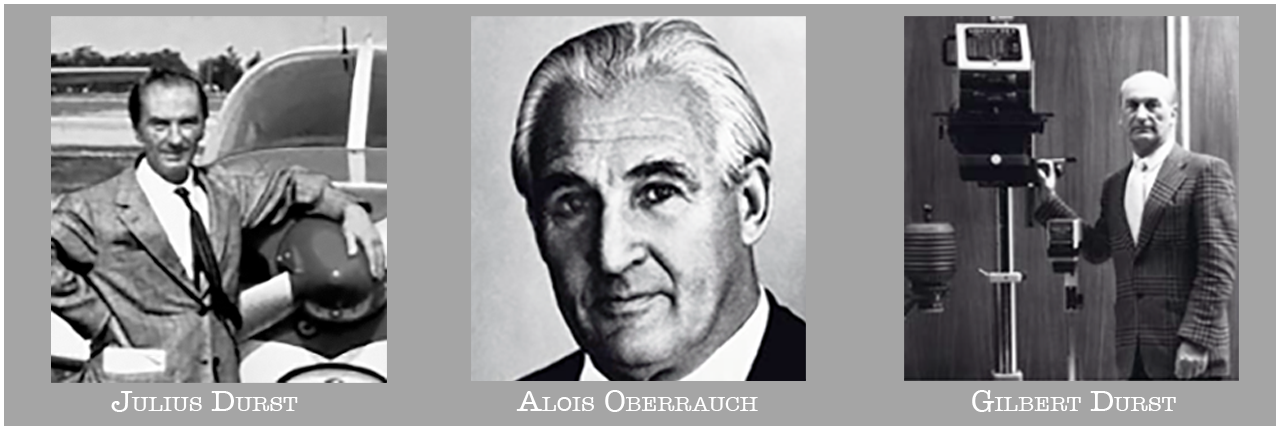
Despite all their creations, however, their main interest was still photography. Therefore, the brothers decided to pursue an education in this field: Julius attended the technical academy in Konstanz, and collected the necessary paraphernalia for this field. Gilbert, who later became the manager, was trained at a renowned photo shop in Innsbruck. On top of this, they diligently continued designing and building various creations during their spare time.
It started in 1929
The initial passion turned into a profitable occupation. In 1929, Julius and Gilbert dared to take that courageous step to independence. They built and repaired all kinds of photo equipment at home. Their friend took over the sales and collection part. Each and every project was designed in line with customer preference. Elaborate custom-made products originated during this era, for example movie equipment such as winders and viewers, projectors for stamps, darkroom equipment, cutters for reel paper and copy machines for post cards.
With the ‚”magic lantern”‚ the first enlargements were attempted. Each piece of equipment was created autonomously, while the required parts were produced at a Brixner locksmith‚ amongst the most primitive conditions and with completely antiquated machines. Gilbert Durst once remarked, ‚”No one knows how much we suffered under these conditions.”
Post cards for South Tyrol Tourism flourished in South Tyrol in 1930, and therefore, post cards were very much in demand. Although the post cards had very high picture quality, they were simply too expensive. Thus, rational measures needed to be taken.
In 1934, the famous Durst copy machine was brought in. This was an excellent device because one could produce a lot of different motives on small cards. Though the demand for the machine was great, sales were not enough to support the whole entire company. Thereafter, the brothers began looking around for more profitable areas.
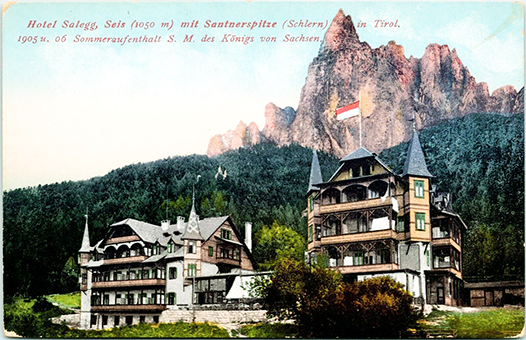
An example of a postcard from that time.
In order to protect themselves from their ideas being stolen, they came up with their own patent in 1934. Protected by this patent were enlargers, copy machines, innovative negative holders, as well as the automatic focus. In the following years, they gained a further amount of intellectual property rights, some of which were international. Soon thereafter, the global market was open to Durst’s great inventive talents and small, but decisive innovations.
Julius Durst said to himself one day after working: ”this cannot go on like this”. The valuation of the self-developed patents for photographic equipment required a larger capital and a rearrangement of the company. Therefore, they began looking for a suitable financier in Bozen.
A well-known leather factory named Alois Oberrauch und Söhne, which was founded in 1865, showed interest in the plans of the Durst brothers. In 1933, the cooperation between Oberrauch and Durst was therefore sealed. The Dursts were responsible for the technical aspects of photography whereas the Oberrauchs were responsible for the economic aspects. The combination of skills and capital was a success.
In 1936, the Durst brothers announced the grand opening of their Durst Phototechnik AG Company. They needed an office with enough rooms for planning, production, and assembly, so they rented a nearby building. Finally, they could begin with the industrial manufacturing and the world-wide distribution of modern photographic techniques.
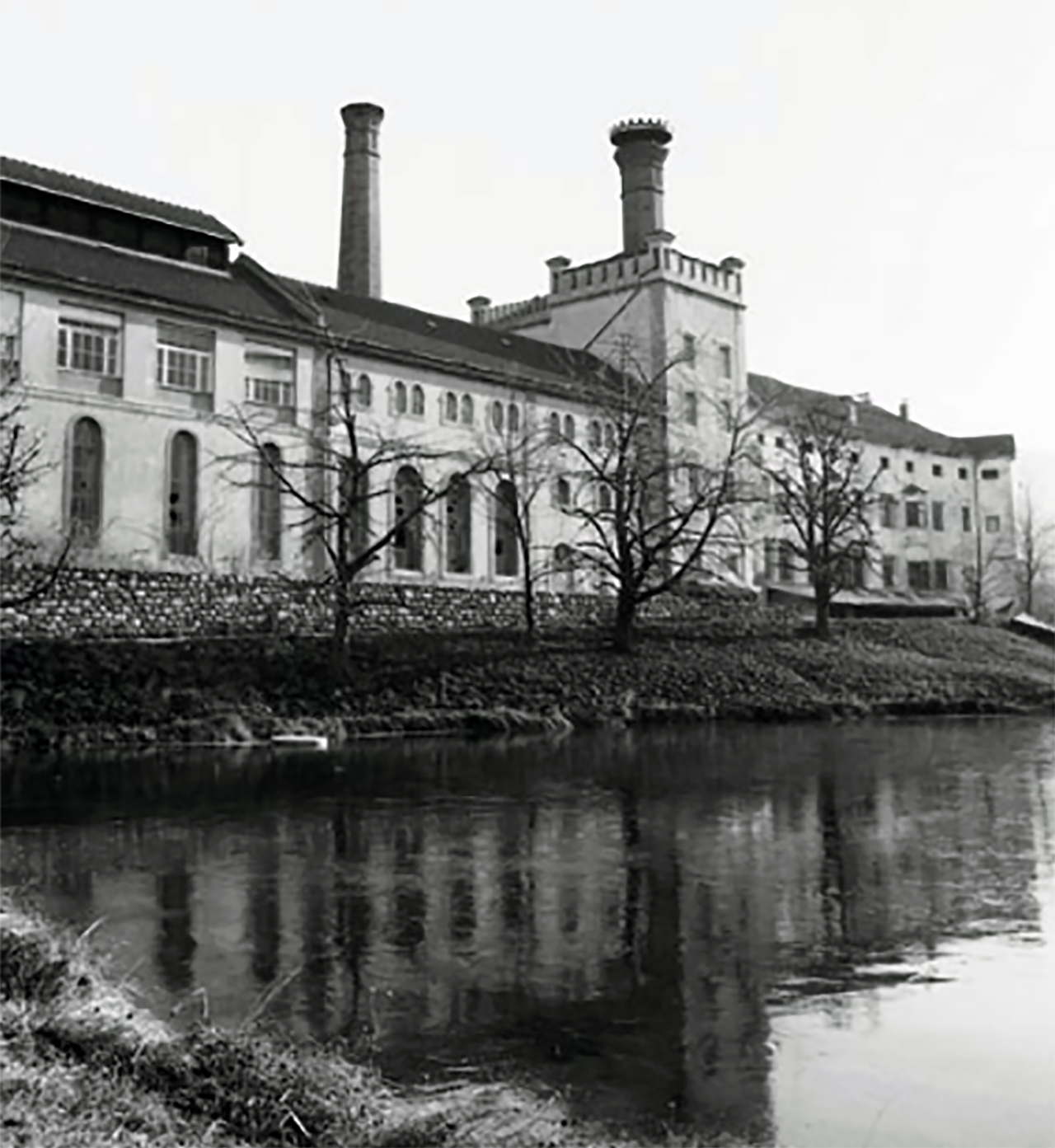
The „Old Durst“ in Brixen
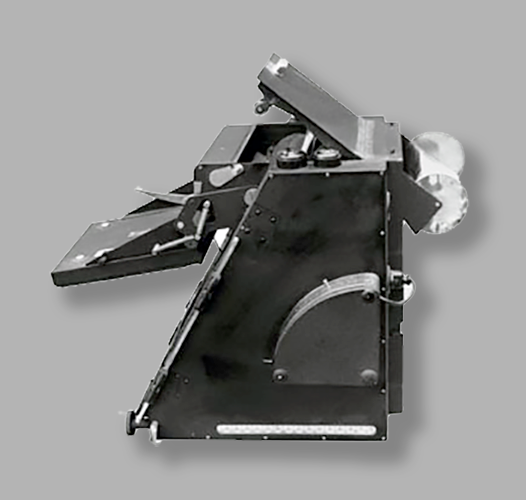
One of the first roller copiers from 1931.
Durst is known worldwide for its high-quality enlargers, but between 1938 and 1963 they also produced some fine and technically interesting cameras: the Durst Gil in 1938, the Durst Duca in 1947, the Durst 6-6 (or Durst 66) in 1956 and the Durst Automatica in 1960. In 1963 Durst decided to concentrate its industrial efforts only in the production of enlargers and other related darkroom equipment.
The dream of having a camera, which could shoot in series, never died. In 1938, this dream became reality with the first Durst Camera, the Gil. It was a box camera for 8 exposures 6×9 cm on 120 film. Its production started in 1938 and ended between 1942 and 1943, when the factory was compelled to switch to war production. The production of the Gil was resumed after the war by Ropolo, Torino as Ro-To Juve.
Thanks to the double exposure prevention and the curved lens, the camera produced a much better picture quality than the other cameras in the same price range. Since cameras required extremely high tuning and precision, Durst soon set up a separate department for camera production.
A giant enlarger for negatives up to 30 x 40 cm went into mass production in 1942. Via the die-cast method, the newly developed, extremely thin aluminum parts enabled a much more elaborate construction. Apart from the function, the aesthetics also needed to be pleasing so special mixtures of lacquer were refined and refurbished for the surfaces. Soon thereafter, a motorized enlarger containing quicksilver gave way to a new generation of equipment in 1943. The motor was produced after these strict principles: quality, stability, exact mechanics, precise optical axes, carefully selected optical finishing, and long product life.
The economic depression after the Second World War was quickly overcome. After the first Gil-camera, the Duca came in 1946, a pocket camera for taking 12 exposures 24×36 mm on 35mm film, loaded in Agfa Karat cassettes. Experts agreed that this was an ingenious creation, not only because of its high technical quality but also because of its absolutely original oval shape. The colouring of the Duca camera was also quite fashionable: the black, brown, blue, red or white polish looked great at every photo session.
Durst further expands their sales and distribution abroad. A great amount of their products were already sold in the 40s and the 50s. In 1953, their first distribution company, the German Durst GmbH in Munich, was founded.
In 1956 two new camera types were presented: the Durst Automatica 35mm viewfinder camera and the Durst 66 medium format camera.
The height, and at the same time, last camera model was the Automatica: the first camera containing automatic exposure control with pre-selected lens aperture.
In 1963, camera production had to be stopped due to financial reasons. With this, the era of the Durst cameras officially ended. From this point on, enlargers became the Durst main line of production.
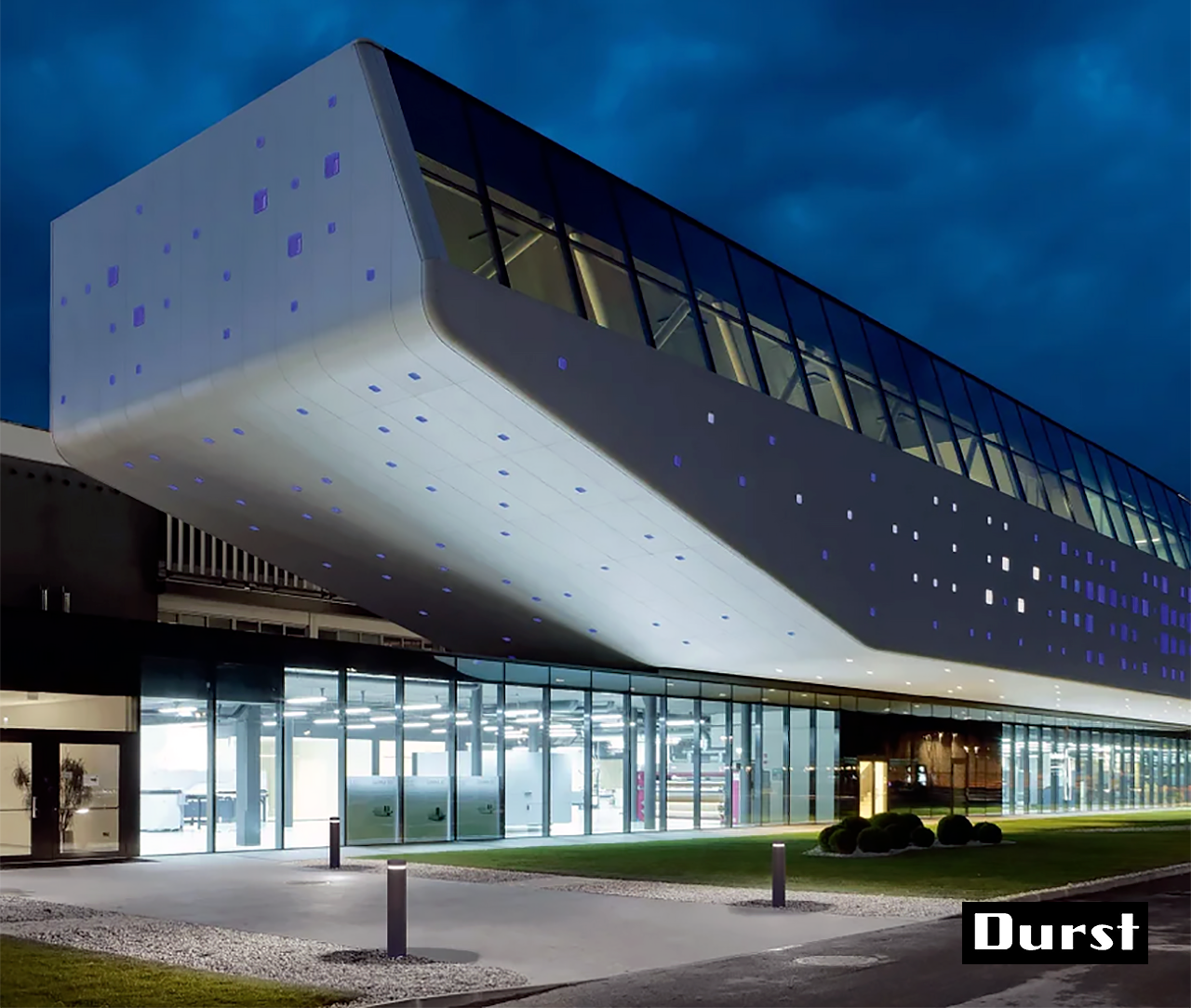
The original design of the new factory in Brixen comes from the year 1963. The new headquarters of Durst Phototechnik AG in Brixen, South Tyrol, makes a spectacular architectural impression with a low, contoured wing that soars up into a 35-metre-high tower. By night, the futuristic building with 850 pixel-like window elements uses the creative force of light as a medium. Patrik Pedo and Juri Pobitzer of Monovolume Architects, based in Bolzano, drew on plans from more than 50 years ago that were only partially implemented during the construction of production halls. The futuristic new building now forms a bracket around these production halls, setting a unique company statement.
Darkroom timeline of Durst
The focus of this website is on the history of the manufacturing company with camera production in the center point. Since Durst was mainly developing and manufacturing dark room equipment as from 1963, we continue here with an brief overview of developments in the field of darkroom equipment.
In the fifties, the Durst Company was one of the few large employers in Brixen. At the time, Brixen’s economy was suffering. The first question that Durst had to solve in the field of enlargers was: black/white or colour? In 1957 Durst equipped quite a few of their enlarger models with colour heads.
In 1966, a new factory premises were commissioned. Following the death of Julius Durst, the constructive head of the company who died in a car crash in 1964, his young team had to resume their duties and responsibilities on their own.
This clearly demonstrated their ambition and success, as depicted in their first colour head with automatic exposure control for all picture formats from 24 x 36 mm to 13 x 18 cm.
In 1966, their production program was made up of eleven models featuring enlarger accessories and diverse darkroom devices. Shared features: extreme precision, compactness, and very convenient operation.
The renaissance of the home enlarging sector began with the first amateur colour analyser. In the 60s, it appeared as if the period of the amateur darkrooms had ended. Colour photos celebrated their breakthrough, but hobby lab workers didn’t believe that they would be able to develop good quality colour photos themselves.
This opinion changed when Durst came up with new, user-friendly home equipment. The amateur sector played a very important role for the Durst Company during the next ten years. In 1977, this sector reached 60 percent of the total turnover. Moreover, Durst goes abroad and founds in 1972 their first foreign production site Durst (UK) Ltd. in Epsom, England.
Durst in the seventies, eighties and nineties
In 1975 Durst launched Magica 300/350, a daylight enlarger, which delivers perfect work even without a darkroom. The second highlight of the year is the first professional colour analyser CAN 450 for modern photo labs.
In order to intensively cater to the humongous American market, Durst North America Inc. situated in Temple, Arizona was founded in 1976.
In 1981 took Durst, as the market leading company in the field of darkroom equipment, the experts by surprise with the first horizontal enlarger. Furthermore, a new amateur enlarger with automatic exposure control and integrated analyser was presented in the early 80s. This easy-to-use device was a great gift for all ambitious hobbyists.
Even more exact, more profitable, and quicker Optimo and Optopia enlargers marked the beginning of a new generation of enlargers in 1985. Behind the catchy names was a complete system for modern, rational picture composition. Special features include the novel lighting system, the elaborate electronic control and the high ease of use operation.
New products and power ratings point the way in the 90s: items that strike the eye are the approved modular 70 of the amateur sector or the developing machine Printo, which guarantees top quality and easy usage. A secret tip for hobby-lab beginners is Magico, a completely new and unique enlarger accessory concept with considerable advantages.
Durst goes digital
Intensive research and development was started in 1992 and the final result was Lambda 130, which was presented in 1994. Lambda is a laser-supported large format output device for high resolution exposure of digital picture and text data on all conventional photo materials up to 127 cm in width.
Since 1995, more than 900 installations have been installed in photo labs, reprographic facilities, pre-press facilities and industrial firms. A new dimension of large-screen technology was discovered and new picture quality criteria were set.
In the last year of the twentieth century Durst introduced the EpsilonDurst, a professional fibre glass LED photo printer for exposing digital photographs on photo paper up to 76 cm in width.
This device was especially made for small and mid-sized specialized laboratories, mini-labs, wedding photographers and society photographers, portrait photographers and school photographers, etc. Durst Epsilon Plus was characterized by top quality (254 dpi continuous tone) and flexibility in paper formats and media selection, as well as by custom-made software programs.
With their entry into the world of ink jet technology and their subsequent growth potential, Durst’s production capacity needed to be expanded. Due to the affordable conditions in East Tyrol, Durst decided to set up a new production site in Lienz. On the 30th of July, 1999, the new factory in Lienz ‚ Durst Digital Technology GmbH‚ was ceremoniously opened.
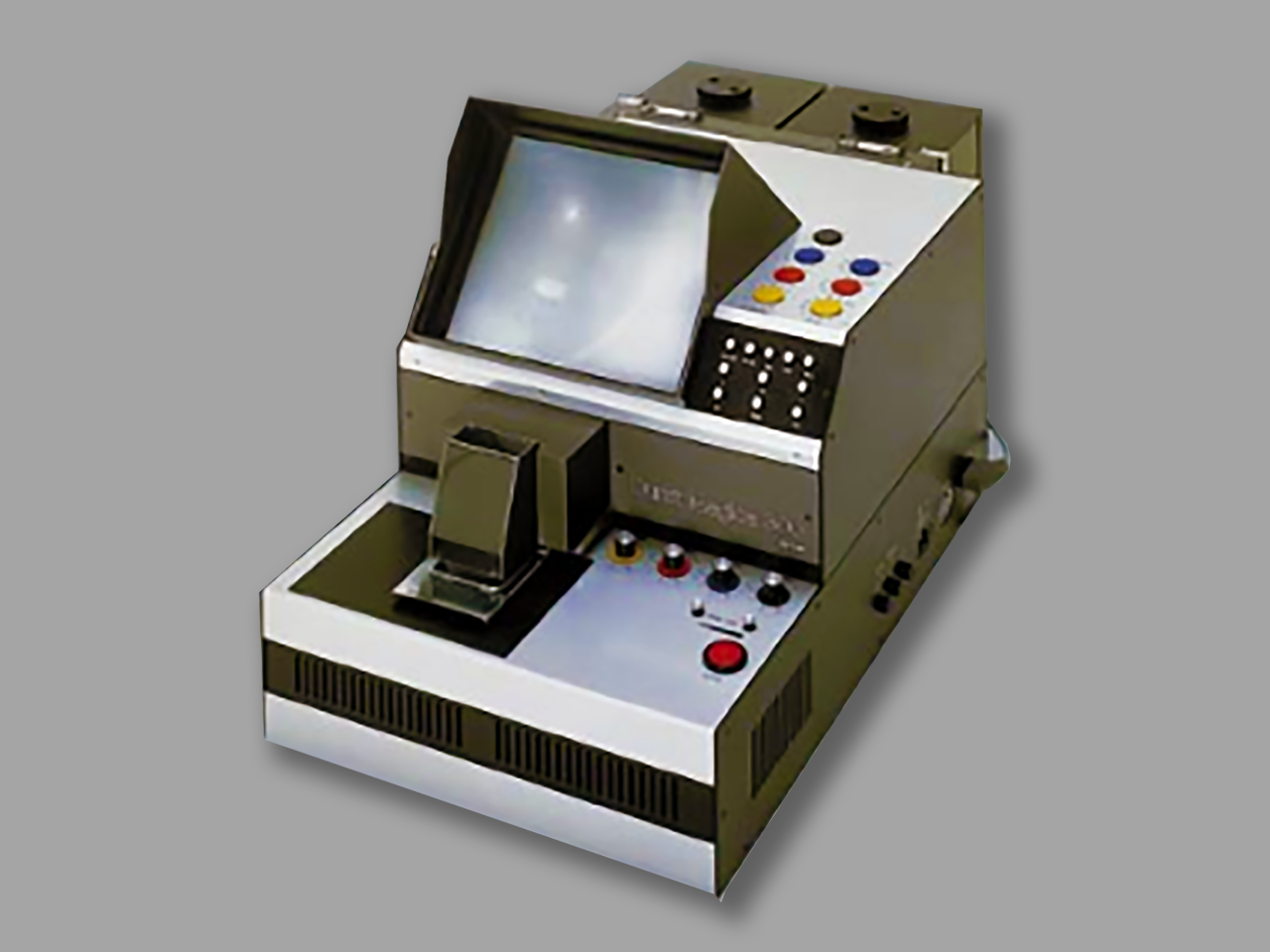
Durst Daylight Enlarger 300
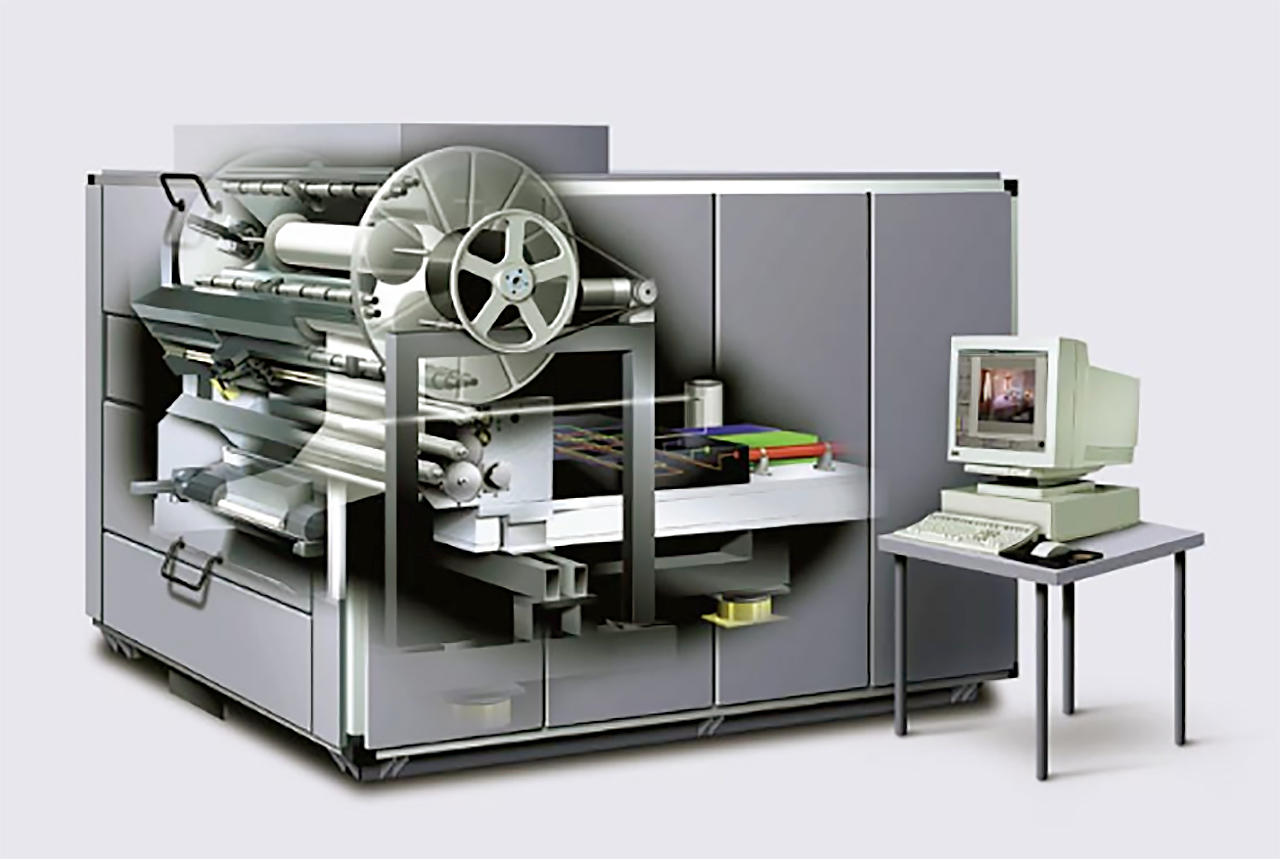
Durst Lambda 130 Output Device.
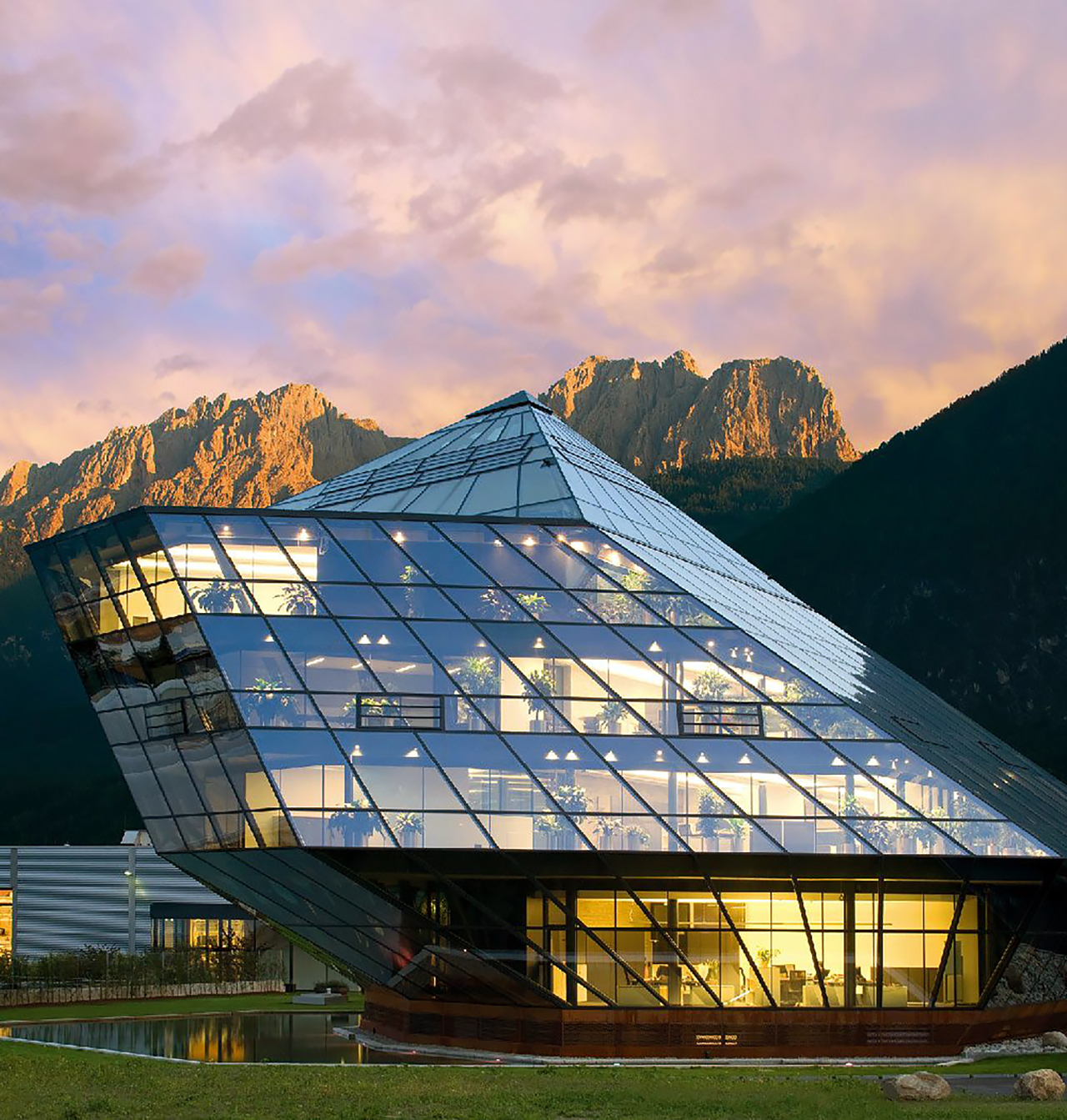
The Durst Innovation Center East in Lienz was inaugurated in Lienz on July 23, 2010. As always, Durst ensures that the design of the building is extremely striking. This new research center for inkjet technology, equipped with one of the most up-to-date chemistry-physics labs and a suitable scientific team, specializes in researching the bases for using inkjet printing in the energy technology, life sciences and health sectors and in security codes for brands – the products of 2018 and beyond…
Durst in the twentyfirst century
A good start is half the job must the management of Durst have thought when the new age started. They immediately launched in 2001 the Rho 160. The Rho 160 was the first high-performance inkjet printer designed for industrial large-format digital print in the realm of photo labs, screen printing and printing industries. This new technology allows one to print directly on uncoated roller materials and plates of up to widths of 160 cm and thicknesses of 40 mm found in inflexible materials. Printed materials could then be utilized immediately without having to go through any sort of finishing.
In the same year the Sigma was launched. Sigma is a professional, high-speed film scanner for photo finishers, specialized labs and prepress facilities. Sigma delivers top quality scan samples for various data formats in colour, black&white negatives and film slide samples from 35 mm to 4 x 5. This enables the direct output of different output devices such as Lambda, Theta, Epsilon, etc. Due to its automatic film transport, high-resolution line sensors and intelligent, top quality software, Sigma Plus is one of the quickest film scanners around.
Durst has now their own distribution companies in all the important markets in Germany, England, the USA and France in 2002. Furthermore, the year was characterized by the market launch of the Theta 50, a complete digital lab system based on laser exposure technology, which was developed for the top production and quality in portraits, photo finishing and specialized labs. Also in 2003, the production and market launch of the proprietary development of Rho 205, a solely 2 m wide inkjet flat bed printer in Lienz begins.
The distribution company Durst Image Technology Latin America S.A. was founded in Mexico City in 2005, in order to deal with the Latin American market. 2005 was also characterized by the introduction of the follow-up of the Theta 50, the Theta 76. Theta 76 is a complete digital Lab System based on fibre optic LED Technology with continuous exposure of pictures on RA4 roller material up to a maximum width of 76.2 cm.
In June of that year, Rhopac was introduced to the public at the FESPA, a fair for digital printing in Munich. This flatbed inkjet printer based on Quadro Array Technology was especially developed for printing on corrugated cardboard cartons found in the packaging industry as well as for printing displays. It enabled the efficient and quick production of sample packaging and small series up to 2000 pieces without having to produce printing plates. Rhopac is also produced in Lienz.
In Lienz, Durst doubled their production capacity to 5600 m2 and turned the site into a high-tech location. At the same time, a Technical Academy for digital printing and an Art park named after Luis Oberrauch, the co-founder of Durst were opened. The new building accommodates an entire assembly line, from pre-press preparation stations to complete punching and bending units for digitally printed packaging, as well as training classrooms, where users from all over the world learn about the digital printer.
The Gil was the first camera produced by Durst Phototechnick A.G. Its production started in 1938 and ended between 1942 and 1943, when the factory was compelled to switch to war production. It takes 8 exposures 6×9 cm on 120 film. The production of the Gil was resumed after the war by Ropolo, Torino as Ro-To Juve.
The meaning of the name Gil is somewhat unclear. Some sources report it was derived from the name of one of the Durst brothers, Gilbert, where other sources say it was chosen to recall the fascist youth organization GIL.
Variants
Several variants of this camera has been produced:
• Front plate printings in Italian, German, English or Swedish; also in black or light-brown colour.
• With or without closing latches.
• Film-advance knob either flat and leather-filled or concave and nickel-plated.
• Shutter speed marked either 1/25 or 1/30
• With or without a film-advance reminder arrow printed vertically on front plate
Specifications
• Type: box camera
• Film: 120
• Viewfinder: Double brilliant finder type
• Lens: Incisar 105mm f/11 – f/16 meniscus type
• Shutter: guillotine type – speeds 1/30 second, B – no flash sync
• Dimensions: 81×102×115 mm
• Weight: 490g
The Durst Duca is a 35mm compact camera and was the second camera produced by Durst, from 1947-1952. It exposed 12 exposures 24×36 mm on 35mm film, loaded in Agfa Karat cassettes.
The Duca was presented by Durst at the 24th Milano Trade Fair in September 1946 and its sales started at the beginning of 1947. During the 30th Milano Trade Fair, in April 1952 (so 5 years later), Durst announced the stop of its production.
The camera was painted in an unusual crinkle-finish paint, the same Durst used for its enlargers at that time. It was available in black, red, white, blue and brown, with five different kind of leather bags. Black cameras were usually provided with a natural leather colour bag, where the colour versions used to be provided with a bag of the same colour.
Variations
The Duca can be found with the focusing distance scale in both metric and imperial units. Apart from the different colours and metric/imperial units indications, a very rare variation with a 1:8 lens aperture is known to exist. The actual lens appears to be same as the one from the regular 1:11 aperture version, the higher aperture seems to be obtained thanks only to a larger internal diaphragm. A “1:8” engraving is added on the front plate just above the “Duca” name.
Specifications
• Type: compact camera
• Film: 35mm in Agfa Karat cassette
• Viewfinder: telescopic type
• Lens: Ducar 50mm f/11 meniscus type
• Shutter: guillottine type – speeds 1/30 second, B – no flash sync
• Dimensions: 100×80×40 mm
• Weight: 255g
The Durst 66 was a very robust and somewhat unusual looking camera. As opposed to most other non-folding medium format cameras, which has collapsible lenses, the Durst 66 had a large unit-focussing lens. This lens was a simple doublet with a focal length of 80 mm and, according the marking on the lens, a diameter of 22 mm.
As the aperture opening is considerably smaller than that, the lens speed was more likely in the f/10 range. It also had a smaller aperture setting, set by the black ring at the lens base. The camera had a curved film plane to compensate for the simple lens construction.
The Durst 66 had a leaf shutter with a range of 1s to 1/300 and also featured a crude extinction meter. The shutter appears to be pneumatic, without automatic exposure control. Thus the shutter had no springs or a speedcam, but regulated the exposure through releasing pressurised air through small holes, the size of which determined the shutter speed.
The Automatica was a 35mm viewfinder camera, made by Durst SA of Bolzano, Italy, from 1956 until 1963. It was the first camera containing automatic exposure control with pre-selected lens aperture. It was a special make, where a certain coincidence played a large role. During the later part of 1944, an American bomber was shot down in Brixen. The instruments on board were strewn about the woods. Amongst these instruments was a tiny controller, which Julius Durst took with him. He analysed this object until the first automatic exposure control was born.
The lens of the Automatica was a coated Schneider Durst Radionar 45 mm f/2.8 in a special Prontor SVS shutter. This has speeds 1 – 1/300 second, plus ‘B’, and an automatic setting, allowing the shutter speed to be controlled by the selenium meter via a part-electronic, part-pneumatic mechanism, giving a very early instance of aperture priority automatic exposure. This is the same mechanism used by Agfa in the Automatic 66, although there are some differences; for example, on the Automatica, the film speed is set on the shutter body, whereas in the Agfa camera this setting is on the meter in the camera’s top housing.
The Automatica premiere was in 1956. In 1963, camera production had to be stopped due to financial reasons. With this, the era of the Durst cameras officially ended. From this point on, enlargers became the Durst main line of production.
FOUNDER: Edwin Elliott

COMPANY NAMES:
1910: E. Elliott Ltd.; 1911: The British Optical Lens Co.; 1983: Acquired by the Reed International Group. The company name was changed to Elliott Moulders (Electronics) Ltd.; 1986: Name changed again to Caradon Elliott Ltd.; 1988: British Optical Lens Co Limited was dissolved; 1997: Caradon Elliott Ltd. became Elliott Plastic Components Ltd.; 2003: Elliott Plastic Components became part of the Otford Plastics Group; 2003: dissolved.
COMPANY ADDRESSES:
1909: Frederick Street, Birmingham; 1916: 17-18 Warstone Lane, Birmingham; 1926: Brearley Street, Birmingham; 1937: Bescot Crescent, Walsall; 1968: 315 Summer Lane, Birmingham; 2001: 2650 Kings Court The Crescent Birmingham Business Park, Birmingham.
Elliott Ltd. was a plastic moulding firm based in Birmingham, England. Elliott made cameras from the 1930s to the 1950s, together with the British Optical Lens Co (BOLCO). – also owned by Edwin Elliott, and founded at the same time as Elliott’s. Elliot’s also made plastic parts for the neighbouring Standard Cameras Limited and Coronet Camera Co., and in turn, bought shutters from Coronet for the V.P.Twin camera. BOLCO also made lenses for Coronet, and later for Corfield. The company lasted until the 1980s.
 Edwin Elliott was born in Great Tindal Street, Ladywood, Birmingham 31st May 1878. He was the 12th of 12 children, only four of whom lived beyond childhood. At the age of 14 Edwin was taken out of school by his father to start work (it was normal practice at that time for children to leave school at 14).
Edwin Elliott was born in Great Tindal Street, Ladywood, Birmingham 31st May 1878. He was the 12th of 12 children, only four of whom lived beyond childhood. At the age of 14 Edwin was taken out of school by his father to start work (it was normal practice at that time for children to leave school at 14).
He started work at H.W Ward Ltd, an engineering company, which he left when he found another boy at his lathe after returning from taking time off. The foolishness of his employer Ward in replacing Edwin was fortuitous because without it Edwin would not have made the move into the jewellery trade which was to set him on the road to forming his own company and eventually owning six factories.
This second job was working for Hyde’s at Warstone Lane, assembling brooches, but he was ‘let go’ after only 6 months when they found he needed glasses for the fine work that was involved in assembling small beads on brooches.
Staying with the jewellery trade, he then became office boy for the import/export firm of Eckardt, Bendorf & Peine, at 16 Vyse Street in the Birmingham jewellery quarter, where he was involved in sourcing and pricing quotes for goods made locally (like cheap pearl cufflinks) which were supplied to Hamburg for resale, and he delivered goods which came the other way for customers in Birmingham. He made many German and Austrian friends and learnt German at evening class, also with the help of two Austrian friends.
In 1903 he left Eckardt, Bendorf & Peine, to become agent for C. Aug Schmidt of Gablonz in Bohemia, who made imitation stones which he marketed to jewellery makers in Birmingham. Mr Charley S Wildman and Miss Florence Nicholls joined the business (respectively as Traveller in 1907 – retired in 1970, and Messenger in 1908 – retired in 1959) and were with him all their working lives.
Founding his own firm
In 1909 Edwin Elliott left the employment of Schmidt’s, but kept the agency to deal in their stones at his own prices, and in 1910 he founded the firm of E. Elliott at 55 Frederick Street to import and manufacture imitation precious stones and merchandise for the jewellery and fancy goods trade (this work was still part of the company’s business at least into the 1950s). Galalith casein plastics material being one of his imports. He soon began machining the material to his customers’ requirements.
He was also agent for a manufacturer of spectacle lenses, but in 1911 he bought them out and developed it into The British Optical Lens Company (BOLCO), first registered in 1911, in Key Hill Drive. Harry Elliott (Edwin Elliott’s elder brother) joined the firm as manager, and he was an excellent engineer who reorganised and modernised the BOLCo-plant. The business grew and moved to Regent Street, Smethwick.
In 1914 with the outbreak of the war the import of imitation stones and jewellery from Germany was cut off. So Elliott’s diversified their range of products. E.G., they got a major War Office contract grinding and polishing green glass for goggles used by troops in the bright sunlight of the Egyptian desert.
Frederick Street works were also developed as a machine shop for the manufacture of Vegetable Ivory goods such as buttons. They also had the agency for Galalith, a casein material for manufacture of knife handles and buttons. This was a German product and when supplies were cut off, it was replaced by Erinoid, from the English Company, Erinoid Ltd who had begun production in 1914. This was used to make studs and bushes for the electrical trades. In 1916 Elliott moved to larger premises in Warstone Lane which took both sides of his business under one roof to meet the growing demand.
After the great war
After the war, the company expanded the machining of Erinoid casein into beads, knobs, manicure sets, etc. and started to produce compression mouldings in Bakelite. They also went back to making spectacle lenses, a business which had only limited success until they secured a contract from F W Woolworths. This was the foundation of the success of BOLCo.
In the early 1920s the company entered into the Bakelite moulding industry at their Warstone Lane factory by installing new presses to make radio parts and in particular to capitalise on the potential of coloured powders becoming available to make ‘beetleware’
The Warstone Lane premises soon became too small so the company moved to premises in Brearley Street where techniques and machinery were continually developed and modernised. Here, in 1927 their first injection moulding press was installed, which enabled more delicate and intricately designed items to be produced. Elliott’s became one of the largest suppliers of radio components, claiming to be the first large scale producer of moulded radio cabinets for Telsen in 1928.
1933 saw the installation of an Isoma injection moulding machine – the first of its kind in Britain. To cope with demand, Elliott’s bought the moulding section of Messrs. Harrison (Birmingham) Ltd. in Cheapside and became a private limited company in 1936.
During the 1930s the Coronet Camera Company was adjacent to Elliott’s Victoria Works (Summer Lane) and the owner, Mr S J Pettifer, was a friend of Edwin Elliott. Elliott’s did some sub-contracting of body mouldings and lenses for Coronet cameras, who made the metal parts and shutters and marketed the cameras under their name. Elliott’s made Bakelite and plastic bodies and parts for many of the Coronet cameras, including the Midget and Vogue, and BOLCo made many of the lenses. Coronet made the shutters and assembled the cameras.
In addition to custom moulding, a range of items under their own trademark (L-yacht) were produced. Optical and moulding sides of Elliott’s business combined to produce cameras, from the 1930s to the 1950s, such as the VP-Twin, with its BOLCo lens. Optical and moulding operations also combined to produce self-selection spectacles for sale in Woolworth’s (this was eventually stopped by the Optician’s Act of 1958).
The VP Twin was made for Woolworths – no doubt building on links made through making spectacles for them. It was sold by Woolworths from 1935 until the outbreak of the 2nd WW. Post-war austerity measures meant that the camera did not appear again on Woolworth’s shelves until Christmas 1950.
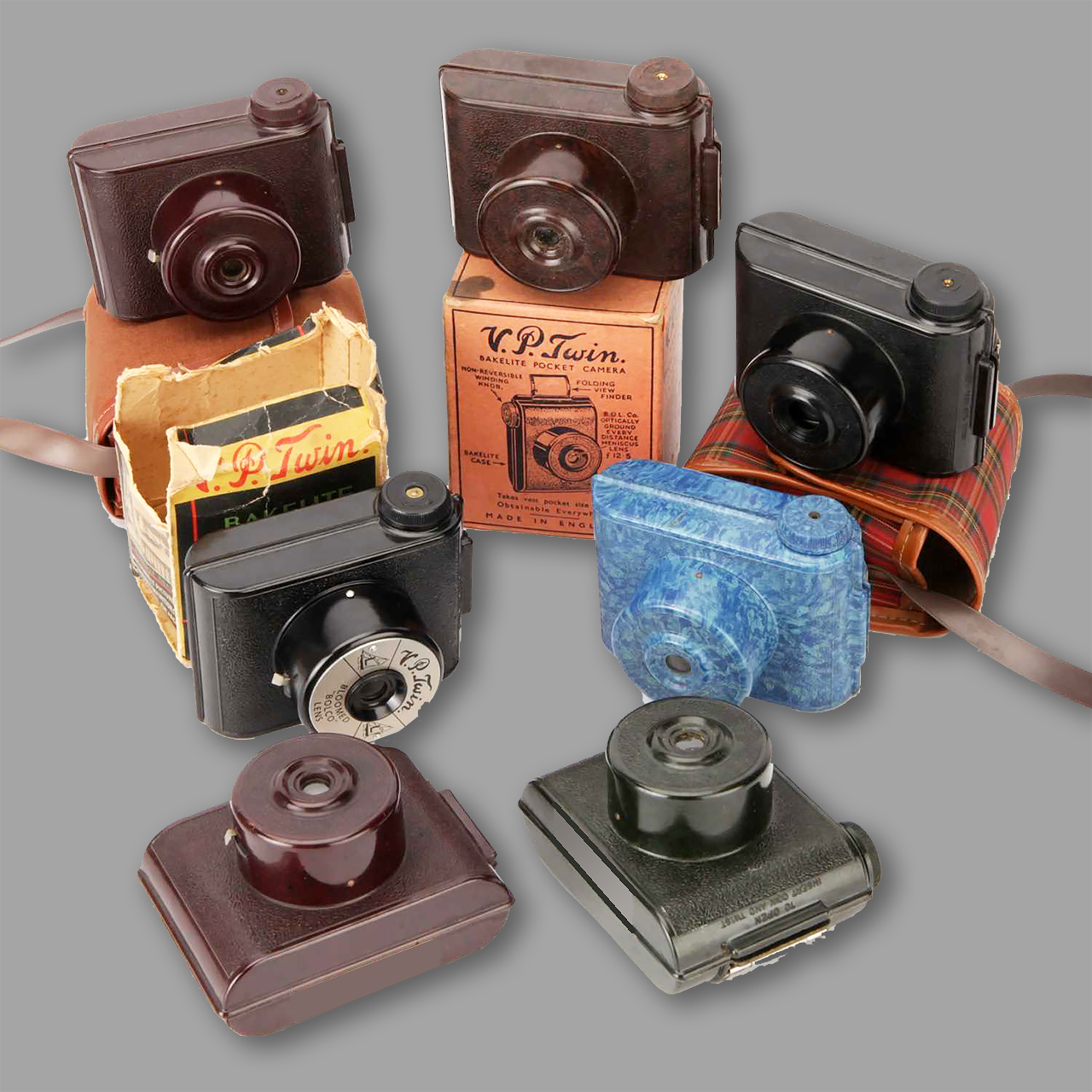
The original V. P. Twin model, introduced in c.1935, was a Bakelite camera and available in black, green, red, blue or marbled brown. It could make sixteen 5/8″ x 1¼” exposures on a type 127 film roll (standard Vest Pocket size roll film). Its earliest version was sold in three parts by Woolworth. Each part cost 6d, all three parts together 1s 6d. The reason for this partial marketing was Woolworth’s promise to sell everything for not more than 6d.
The camera was reintroduced in c.1952, in black with a metal faceplate showing the “L-Yacht” logo, and either a white or black wind-on knob and a textured rather than smooth surface. The back then had the camera name moulded on, between the two film-number windows.
The Vista Colour is a simple Bakelite camera produced in the early 1940s. There is another camera which is called the Vista 12 which is almost identical. However, the Vista 12 has flash contacts on the side of the camera. The Vista Colour just has protuberances in the Bakelite where these contact would go.
The shutter release is on the top of the camera which only works in instantaneous mode. Film advance is by a knob and there is a red window on the back to view the frame numbers. The viewfinder is quite large compared with its contemporaries and is of Galileo type.
The original Periflex with black top and bottom plates, and pigskin covering. Only the first 200 or so were covered in pigskin. It was replaced by black leathercloth which was easier to handle and more fashionable.
The Periflex was sold with a Corfield England Lumar f=50mm 1:3.5 standard lens in a bright aluminium barrel. Corfield had the British Optical Lens Company calculate the lens and they also manufactured the glass elements, while Corfield made the barrels, mounted the glasses, and completed the high quality coated lens in their premises.
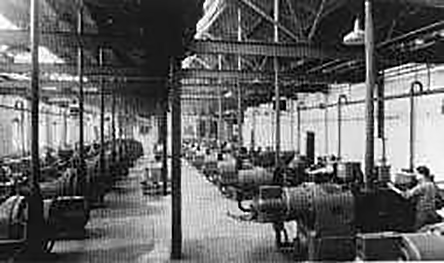
Injection machinery at the Plant
Elliott during WWII
Business expanded and a new factory covering 18,000 square ft. to manufacture switches was leased at Bescot Crescent, Walsall. Elliott’s workforce totalled now 700 staff.
In 1939 with the outbreak of the 2nd WW the company again moved into war work, producing millions of anti-gas eye shields for army use and a 12 ft. periscope for amphibious tanks. On 22 November 1940, the optical department in Brearley Street, Birmingham received a direct hit with incendiary bombs, and was largely destroyed. What could be salvaged was moved to Bescot Crescent to resume production.
On the 9th of April the next year, the factory was bombed again, this time more seriously and 18 men were killed. The majority of factory records were lost, including orders and outstanding invoices. Later the factory was re-built.
Post War
Elliott Limited, incorporating The British Optical Lens Company “Manufacturers of Mouldings in Plastic and Optical and Industrial Lenses and Appliances” became a public limited company in 1950, employing 480 people.
The Directors were:
- Edwin Elliott, Chairman and MD (founder of company)
- John Edwin (Jack) Elliott, Technical Director (joined firm in 1931)
- Charley Sinclare Wildman, Optical Works Director (worked with E Elliot since 1907)
- Company Secretary, Florence Nicholls (worked with E Elliot since 1908).
Edwin Elliott provided financial backing for Kenneth Corfield to develop the Lumimeter and subsequently his range of Periflex cameras in 1950s. Frederick Archenhold, optical engineer at BOLCo, designed and BOLCo produced lens elements for the 50mm f3.5 Lumar (1953), 50mm f3.5 Lumar-X (1955) and 100mm f4 Lumar (1957) and 150mm Lumar lenses.
Edwin Elliott retired in 1966 at an age of 88 after working 56 years at the companies he founded in 1910, and he died on 24th November 1968 in Smethwick. He had 6 factories making plastic and optical items. The business began by Edwin Elliott and closed in 1982.
The company provided following cameras:
- V. P. Twin – • Vista Colour – • Periflex.
TIMELINE E. ELLIOTT COMPANY
- 1878 Edwin Elliott was born in Birmingham. He started work in a machine shop before going into the jewellery trade, but his eyesight was poor so he became office boy at the Birmingham branch of a firm from Hamburg.
- 1903 Edwin took over a job and was selling imitation jewellery stones.
- 1908 Company founded.
- 1909 Elliott started his own business in Birmingham, as an importer and manufacturer’s agent, Galalith casein plastics material being one of his imports. He was also agent for a manufacturer of spectacle lenses.
- 1911 He bought them out and developed it into The British Optical Lens Co.
- 1916 Elliott moved to larger premises in Warstone Lane which took both sides of his business under one roof. After the war, the company expanded the machining of Erinoid casein into beads, knobs, manicure sets, etc. and started to produce compression mouldings in Bakelite.
- 1926 The Warstone Lane premises soon became too small so the company moved to Brearley Street. Here the first transfer moulding press was installed and Elliott’s became one of the largest suppliers of radio components.
- 1933 saw the installation of an Isoma injection moulding machine – the first of its kind in Britain.
- 1935 To cope with demand, Elliott’s bought the moulding section of Messrs. Harrison (Birmingham) Ltd. in Cheapside.
- In addition to custom moulding, a range of items under their own trademark (L-yacht) were produced. Optical and moulding operations also combined to produce self-selection spectacles for sale in Woolworth’s (this was eventually stopped by the Optician’s Act of 1958).
- 1937 Business expanded and a new factory covering 18,000 square ft. was leased at Bescot Crescent, Walsall.
- 1938 Elliott’s workforce totalled 700.
- 1940 The optical site at Summer Lane received a direct hit with incendiary and suffered considerable damage.
- 1941 A second bomb also destroyed much of the moulding side (including all company records) – all machinery that could be rescued was transferred to Bescot Crescent. The Summer Lane factory was re-built.
- 1950 E. Elliott Ltd became a public limited company.
- 1961 Plastic moulders handling optical and industrial lenses and appliances.
- 1966 Edwin Elliott retired, aged 88. He had 6 factories making plastic and optical items.
- 1968 Listed as “Moulders in Plastics” at 315 Summer Lane, Birmingham.
- 1982 Receivers were appointed
- 1982 E. Elliott, of Bescot Crescent, Walsall
- 1983 Acquired by the Reed International Group. The company name changed to Elliott Moulders (Electronics) Ltd
- 1986 Name changed again to Caradon Elliott Ltd when the Reed Building Products Division was subject to a management buyout and became Caradon plc.
- 1987 Elliotts was part of Caradon Plastics. Manufactured mouldings by compression and thermoplastic injection at the Walsall factory; main customers were in the electronics industry, especially IBM UK
- 1997 Caradon Elliott Ltd became Elliott Plastic Components Ltd
- 2000 Elliott Plastic Components Ltd put in the hands of an administrative receiver.
- Elliott Plastic Components became part of the Otford Plastics Group which, in the name of Otford Specialist Mouldings was dissolved in 28 January 2003, and Otford Plastics Limited was dissolved on 10th July 2001 (both companies at the same address: 2650 Kings Court The Crescent Birmingham Business Park, Birmingham B37 7YE)
FOUNDERS: Michael Ellison and Edward McAuliffe
COMPANY NAMES:
1926: Ellison Kamra Company; 1935: dissolved.
COMPANY ADDRESSES:
1926: Los Angeles, California.
The strange story of a company which only made one camera and then disappeared.
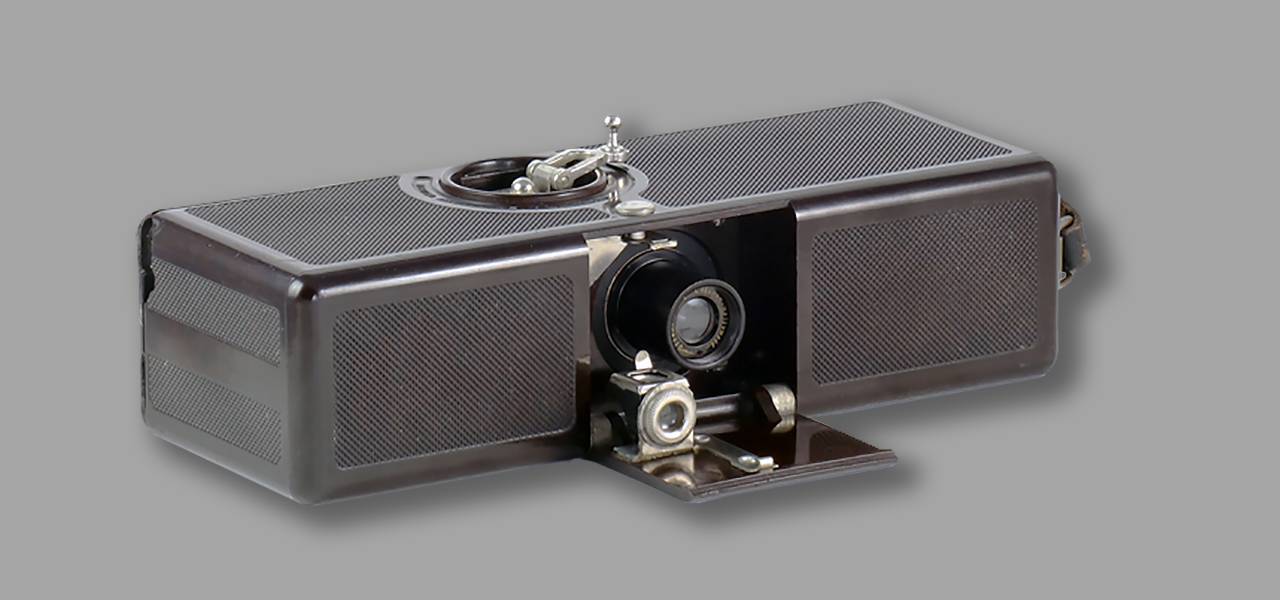
An unusual black bakelite rectangular-shaped brick camera with special bakelite plastic cassettes for loading bulk 35mm film. Winding key at the side advances the film. Film winder also serves as a shutter release. Lens cover opens after pushing a button on the top of the camera.
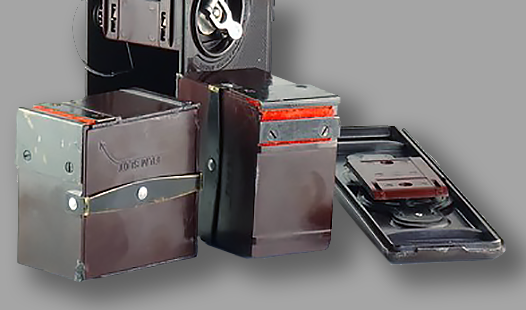
Kamra film cassettes and rear cover with pressure plate.
Around 1926 Michael Ellison and Edward McAuliffe founded their Ellison Kamra Company based in Los Angeles, California. The company was founded to implement their patent for a novel two blade shutter mechanism in a camra with the name Ellison Kamra.
The company made just one camera in circa 1928, for 35mm roll film in special box-shaped bakelite cassettes that could hold 50 feet of film. The body and cassettes were made from brown bakelite. It was fitted with a fixed focus f5 Wollensak lens. A front bakelite door opened to reveal the lens and door mounted brilliant view finder. There were no settings or even view counters.
On top of the camera body was a folding crank, which both advances the film by toothed wheels by the film gate (when wound clockwise) and operates the shutter (when wound in reverse). The crank was also linked to a spool in the uptake film cassette by a belt.
QRS Company
It seemed that within a few months after the launch of the Ellison Kamra, the design was taken over by another Chicago firm, the QRS Company. The Ellison Kamra company faded away and was eventually dissolved on 19th January 1935, having for two years failed to pay its taxes to the State of Delaware.
The QRS Company were manufacturers of player pianos and their music rolls, and it is easy to imagine that by 1928 business was declining, and they urgently needed something new to do. The answer was photography, and the coming idea of miniature photography using 35mm film. And here in Chicago was a product available, maybe needing some more investment and marketing. So in 1928, less than a year from its launch, the Kamra moved to a new home with QRS.
The Ellison Kamra is much less common than the QRS Devry Kamra. The latter, smaller, is, despite improved performance (integrated viewfinder, exposure in addition to the snapshot, frame counter), of a much lower quality of manufacture: the central block of metal is generally cracked, the crank is missing or broken and the shutter no longer works.
The cartridges are made of metal, without axis and the film is driven only by the toothed wheels against the film press. The QRS Devry is in resin with the inclusion of cotton scraps, while the Ellison is in bakelite (“genuine bakelite” engravings all over the inside of the case). Most Ellison Kamras have their cranks intact and still trigger.
FOUNDER: Unknown
COMPANY NAMES:
1945: Electro Optic GmbH; 1948: ELOP, Vereinigte Elektro-Optische Werke GmbH; 1951: UCA Werkstätten für Feinmechanik und Optik GmbH; 1952: The company was bought by Agfa and stopped making cameras.
COMPANY ADDRESSES:
1945: Glücksburg, nearby Flensburg, Germany; 1948: Flensburg.
ELOP was a camera maker in Flensburg, north Germany. The company was founded in late 1945 and started the development of a camera in 1946. ELOP begun as Electro Optic GmbH, in the nearby town of Glücksburg. Production of the Elca, a simple 35mm camera for 24x24mm format began in 1947.
In 1948 the company changed its name to ELOP, Vereinigte Elektro-Optische Werke GmbH and moved to Flensburg. This name implies a merger, and most probably the merger was with Optische Werkstätten Hans Buschak in Flensburg. Here in Flensburg the Elca II was developed and went into production.
Financial problems lead to bankruptcy in 1951, but the company was rescued with state investment, and restarted as UCA Werkstätten für Feinmechanik und Optik GmbH. the same year. Agfa bought the company in 1952, and stopped the manufacture of cameras.
Cameras
The company made several models of the Elca, a simple camera for square 24×24 mm exposures on 35 mm film. It then began to make a much more sophisticated camera, the Uniflex (later renamed Ucaflex) with reflex focusing.
Elca:
The Elca was manufactured between 1947 and 1949. It was a simple viewfinder camera for 50 24×24 mm-square exposures on 35 mm film. It had a 35 mm f/4.5 Elocar anastigmat lens, a single-speed shutter, and a Reverse-Galilean viewfinder. It has a black painted body with nickel chrome top and bottom plates. No film rewind. No double exposure prevention.
Elca II:
Very similar to the Elca was the improved, larger Elca II. This was manufactured between 1949 and 1950. The metal body was chrome with leatherette covering in stead of paint. It took also 50 exposures 24x24mm on standard 35mm cassette with no film rewind required.
It has a Vario or Prontor-S shutter. 3.5 cm f/4.5 Elocar or 4 cm f/2.5 Elopan lens., Vario (B,25-200) or Prontor-S (B, 1-300) shutter and the camera has a cold shoe.
Ucanett:
This third model was similar to the Elca II. The Ucanett was made in 1951. Same 50 exposure 24x24mm on standard cassette. Lenses are now named Ulca f4.5 40mm, Ucar f4.5 35mm or Ucapan f2.5 40mm. Accessory shoe fitted on the centre of the top plate.
Uniflex, later renamed Ucaflex:
The Ucaflex (at first named Uniflex, for less than a year) was a full-frame 35 mm camera with a focal-plane shutter, designed by Franz Robert Neubert of Jena. The camera has a reflex prism and mirror, giving a magnified view of the centre of the frame in the viewfinder for focusing.
Both the mirror and prism flip out of the way when the shutter-release is pressed gently, and the eyepiece then looks onto a Galilean viewfinder for framing before exposure. The Ucaflex was made from about 1950 in Flensburg, Germany, by UCA (the camera is often named as the ELOP Ucaflex).
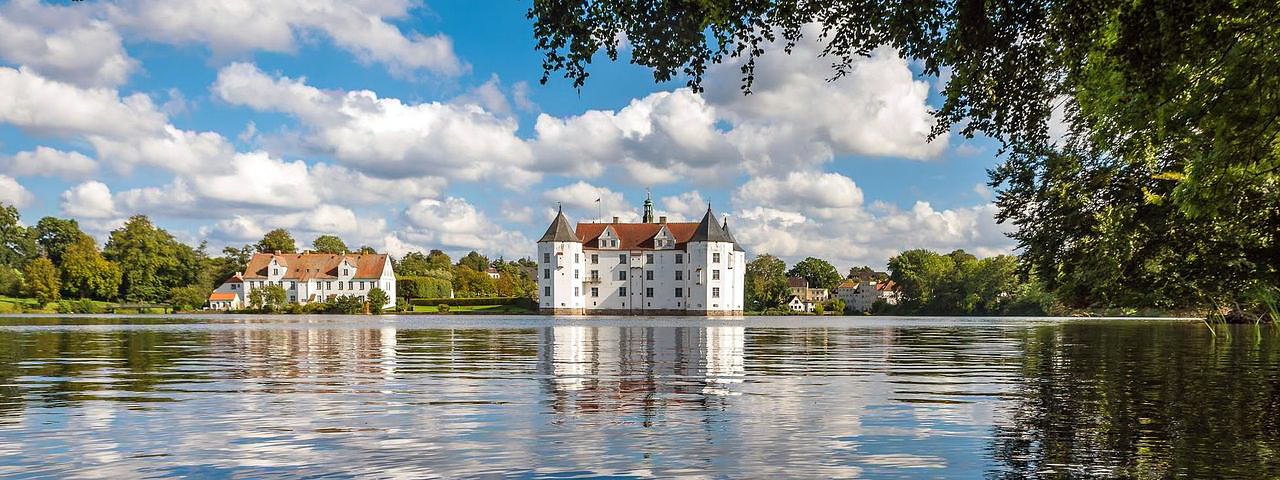
Glücksburg Castle (German: Schloss Glücksburg) is one of the most significant Renaissance castles in Northern Europe. The building is in the town of Glücksburg, located in Northern Germany on the Flensburg Firth. Nowadays, the castle is one of the most famous sights in the German state of Schleswig Holstein. Within the castle is a museum which is open to the public.
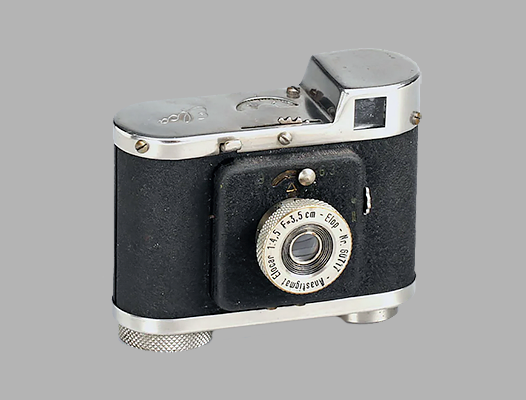
Elop Elca I; Early post-war camera for 50 exposures 24×24 on 135 film.
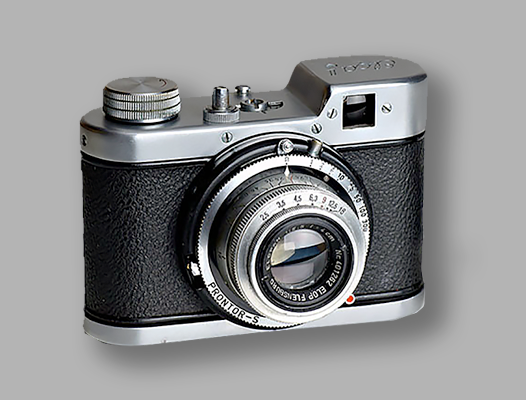
A 1949 Elop Elca II (1949-50) an improved model of the ELCA I.
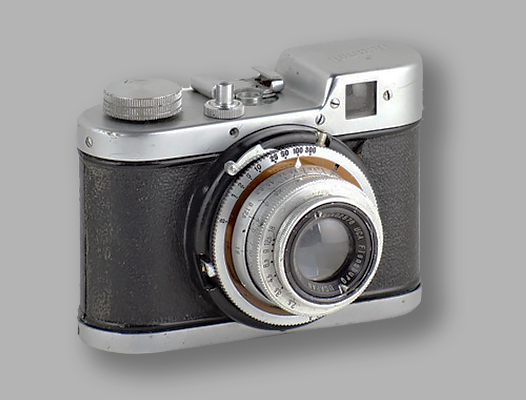
Similar to the Elca II the Ucanett was made in 1951.
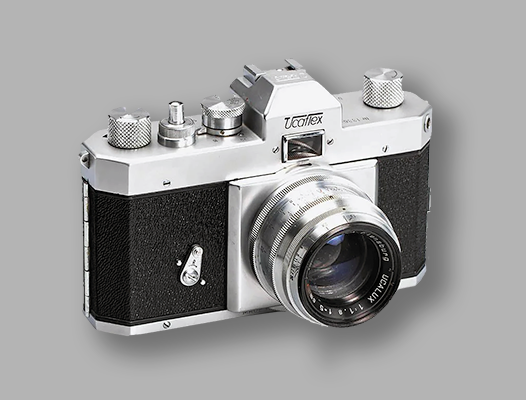
The Ucaflex is a 35 mm SLR camera with ‘periscopic’ viewfinding, made from about 1950.
FOUNDERS: the companies Houghtons and Butcher
COMPANY NAME:
1930-1940: Ensign Ltd.
BRAND NAME:
The brand name ‘Ensign’ was used from 1902 by Houghton until 1961 when the company ceased to produce cameras.
The Ensign name was revived in the 1980s for some 110 cameras.
COMPANY ADDRESS:
Ensign House, 88/89 High Holbourn, London
The company ‘Ensign Ltd.’ covers only a short period of 10 years of the entire history of this famous brand. The entire history of the companies behind this brand is described at Houghton-Butcher. Here we only discuss the origin of the brand and the short period that the company actually was called Ensign Ltd.
The headquarters of George Houghton and Son at 88/89 High Holbourn were called Ensign House in 1901, and the production of the roll film brand Ensign began in 1903. The first Ensign logo was a shop sign with the letter “N” inside, and was replaced in 1911 by the name ENSIGN written inside the British marine flag.
In 1901 Houghton introduced also the Ensign film to the public which became a significant source of revenue competing with the likes of Kodak. The popularity of the Ensign brand then extended to the line of cameras.
Ensign cameras were originally produced by the Houghton-Butcher Manufacturing Company. However, 1930 saw Ensign Limited floated and the company finally took the name of the cameras it produced. During the 1930’s Ensign began production of it’s first and last production miniature camera the Ensign Multex.
The new trading company Ensign Ltd. was set up to be the selling arm of Houghton-Butcher Manufacturing. However, although the company was popularly known as Ensign, the camera manufacturing in Walthamstow kept the name Houghton-Butcher Manufacturing Co., Ltd. until 1945.
Ensign Ltd. kept many of Houghtons and Butcher’s camera ranges. In 1939 it introduced the Ensign Ful-Vue box camera, one of the most popular cameras of its time in the UK.
Air raids in WWII
On the nights of the 24th and 25th September 1940 German bombing destroyed Ensign House, the offices of Ensign Ltd. at 88/89 High Holbourn in London. On October 7th of the same year Ensign Ltd., the selling arm of Houghton-Butcher, was wound up and the sale of the remaining stock of enlargers, epidiascopes and cine-cameras was taken over by Johnson and Sons Manufacturing Chemists. The Houghton-Butcher Manufacturing Co. Ltd. continued to trade under their own name, advertising the Ful-Vue along with other cameras in the B.J.A. until 1942, when they announced that they had sole right to the trade name “Ensign” and would be continuing the manufacture and sale of cameras and accessories using the trade name “Ensign”.
Camera production continued at the Walthamstow works, however due to mounting pressure to produce items for the armed forces combined with the loss of their selling arm and the general drop in demand for photographic goods, the retail photographic business took second place to their increasing commitment to the war effort. No new products were developed during this period apart from items that directly related to military needs.
Ensign in the post WWII period
After World War II, the company soon abandoned the sophisticated Ensign Commando rangefinder camera and continued the range of Ensign Selfix and Ensign Autorange folding cameras, while introducing new models like the Ensign Ranger or the Snapper. Among simpler cameras, a new version of the Ensign Ful-Vue was released in 1946, which was further developed to the Ful-Vue Super and Fulvueflex pseudo-TLR.
Houghton-Butcher Manufacturing Co associated in 1945 with the film maker Elliott and Sons (maker of the film brand Barnet) and became Barnet Ensign Ltd. In 1948 Ross and Barnet Ensign were merged to Barnet Ensign Ross Ltd., which was finally renamed Ross-Ensign Ltd in 1954.
George Houghton’s sons and grandsons continued in the business until the firm disappeared in 1961, when the company stopped making cameras.
Sticking to traditional cameras
Ensign produced some of the best examples of folding roll film cameras available in the fifties. So what had brought them to this sad state of affairs? Ensign was constantly battling against the public belief that foreign cameras particularly those made in Germany were of better quality than British made cameras.
By single mindedly attempting to develop high quality folding roll film cameras which would compete with these German companies they exhausted their research and development budget.
The company completely ignored the publics growing interest in 35mm cameras never producing even a prototype 35mm camera, believing so strongly that the larger format of 120 roll film was superior and would never be surpassed.
In a typically British way they looked back at their fine traditional range of cameras with pride, completely ignoring the changes in the camera industry and retail trade until it was too late.
Ensign cameras were expensive and beginning to look old fashioned. Sales dropped too low to fund the research needed for new designs and Ross-Ensign found it could no longer compete with the new 35mm cameras being imported from Germany and the then expanding camera manufacturers of Japan.
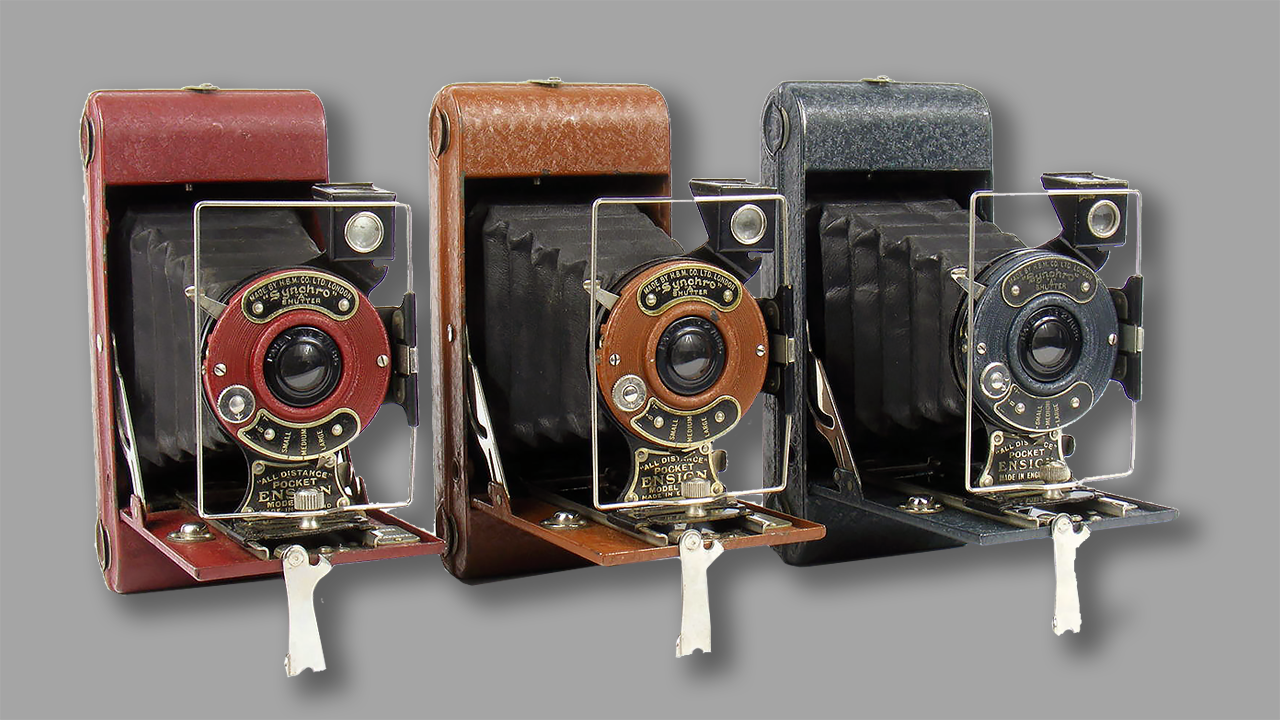
Three Pocket Ensigns in different colors.
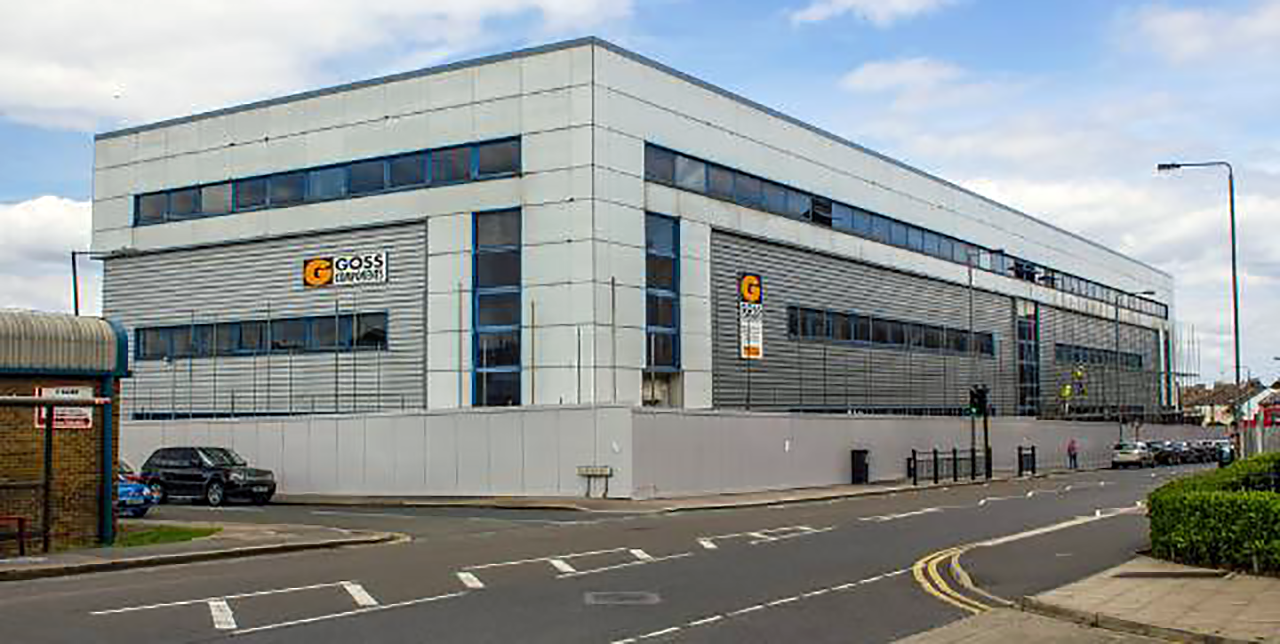
The picture shows the present day Ensign Factory. Essentially, the existing building has been clad with modern panelling and all that visibly remains of the old building is the doorway.
- Alliance Roll-film Camera Co. Ltd, Ensign England,(110 Roll film camera)
- All-Distance Ensign (large range of box & folders)
- All-Distance Pocket Ensign (folder)
- Duo-Ensign 2¼B (box, about 1930)
- Ensign 16-20 (4.5x6cm folder)
- Ensign 12-20 (folder)
- Ensign 2¼ A box (“Ton Box”)
- Box Ensign 2¼ B
- Ensign 2¼ B (folding)
- Ensign 2½ Box
- Ensign All-Distance Twenty (box)
- Ensign All-Distance Pocket (folder)
- Ensign Autorange
- Ensign Autorange 16-20 (rangefinder folder)
- Ensign Autorange 220 (rangefinder folder)
- Ensign Autorange 820 (rangefinder folder)
- Ensign Autospeed
- Ensign Box Duo
- Ensign Caddy
- Ensign Cadet
- Ensign Cameo / Super-Speed Cameo / Cameo Luxus (folding, plate)
- Ensign Carbine (large range of folders)
- Ensign Clubman (folding)
- Ensign Commando (coupled-rangefinder folder for 6×6 and 4.5×6)
- Ensign Cupid (small viewfinder camera)
- Ensign Deluxe Reflex (large plate SLR)
- Ensign Double-8 (folding, 3×4 on 127)
- Ensign E20 (box)
- Ensign E29 (box)
- Ensign Focal Plane Roll Film Reflex (120 film SLR)
- Ensign Folding Reflex (SLR)
- Ensign Ful-Vue (pseudo-TLR)
- Ensign Greyhound (folder)
- Ensign Junior (box)
- Ensign Klito Nos. 0 and 00 (folding, plate)
- Ensign Klito No.1 (falling plate box)
- Ensign Klito No.4 (falling plate box)
- Ensign Klito de Luxe No.9 (folding, plate)
- Ensign Klito Junior (folding, plate)
- Ensign Midget (strut folder)
- Ensign Multex (range of rangefinder 127 roll-film cameras, vaguely Leica-inspired)
- Ensign No. 3 and No. 3A; large folders similar to the Carbine range
- Ensign No.12 Watch Pocket Carbine
- Ensign Perfect Reflex
- Ensign Pocket (large range of folders, e.g. Pocket 20, Pocket E-20)
- Ensign Popular Press-Camera
- Ensign Post Card
- Ensign Popular Reflex (large plate SLR)
- Ensign Ranger (range of folders)
- Ensign Reflex (large plate SLR)
- Ensign Roll Film Reflex (simple 120 film SLR with T&I shutter)
- Ensign Simplex pocket model
- Ensign Selfix (large range of folders)
- Ensign Singlo (folder)
- Ensign Speed Film Reflex (120 6×9 SLR)
- Ensign Special Reflex (large plate SLR)
- Ensign Sprite
- Ensign Watch Pocket Carbine (folder)
- Ensignette (strut folder)
- Ensign Reflex Tropical (large plate SLR)
- J-B Ensign (box)
- Ross-Ensign Ful-vue Super (pseudo-TLR)
- Ross-Ensign Fulvueflex (pseudo-TLR)
- Ross-Ensign Snapper – see Ensign Selfix Snapper (folder)
- Ensign Auto Kinecam 16 / 16B
- Ensign Cinematograph
- Ensign Cinematograph Tropical
- Ensign Kinecam 4 / 6
- Ensign Super Kinecam
1905 Antique Ensign ‘Klito No. 1’ Drop-Plate Camera. It was made from wood, with a black leatherette finish. It’s massive, measuring 23cm x 17cm x 10cm. It weighs a massive 1260 grams. It used 12 glass plates, size 3.25ins x 4.25ins, which were loaded into the top section and then dropped into a separate section at the bottom after exposure.
All Distance Ensign Box camera. Metal bodied box camera, with hinged back for loading. Twin reflex finders and a wire frame direct vision finder. The De-Luxe model was available in various colours (black, red, brown, blue) in a crackle finish, described in the 1932 Ensign catalogue as “crystalline enamel”. It takes 2¼×3¼ (6×9cm) exposures on 120 film (Ensign 2¼B film).
Ensign Midget Model 55 – a strut-braced miniature folding camera designed to take the Ensign E 10 type of film and deliver photographs in the 3.5 x 4.5 cm format. The camera was manufactured between 1934 and 1940 and equipped with an Ensar f = 6.3 lens. The camera came with two types of viewfinders: a reflecting brilliant type and a metal frame (sports) viewfinder.
FOUNDING DATE: 1889
FOUNDERS: Heinrich Ernemann & Wilhelm Franz Matthias
COMPANY NAMES:
1889: Dresdner Photographische Apparate-Fabrik Ernemann & Matthias; 1899: Heinrich Ernemann, Aktiengesellschaft für Cameraproduktion in Dresden; 1926: merged with ICA, Goerz and Contessa-Nettel to the new Zeiss Ikon company.
Subsidiary:
1920: Ernemann-Krupp Kinoapparate.
COMPANY ADDRESSES:
1889-1892: Wilsdruffer Vorstadt, Güterbahnhofstraße 10, Dresden; 1892-1896: Pirnaischen Vorstadt, Kaulbachstraße 13, Dresden; 1899: Junghansstraße 2, Dresden and Görlitz; 1915-1918: Junghansstraße 1–3, Dresden; 1923: Schandauer Straße 48/Junghansstraße 1, Dresden-Striesen;
Ernemann was a renowned German manufacturer of photographic and film cameras from Dresden. During the company’s lifecycle it produced a wide range of high-end cameras and accessories.
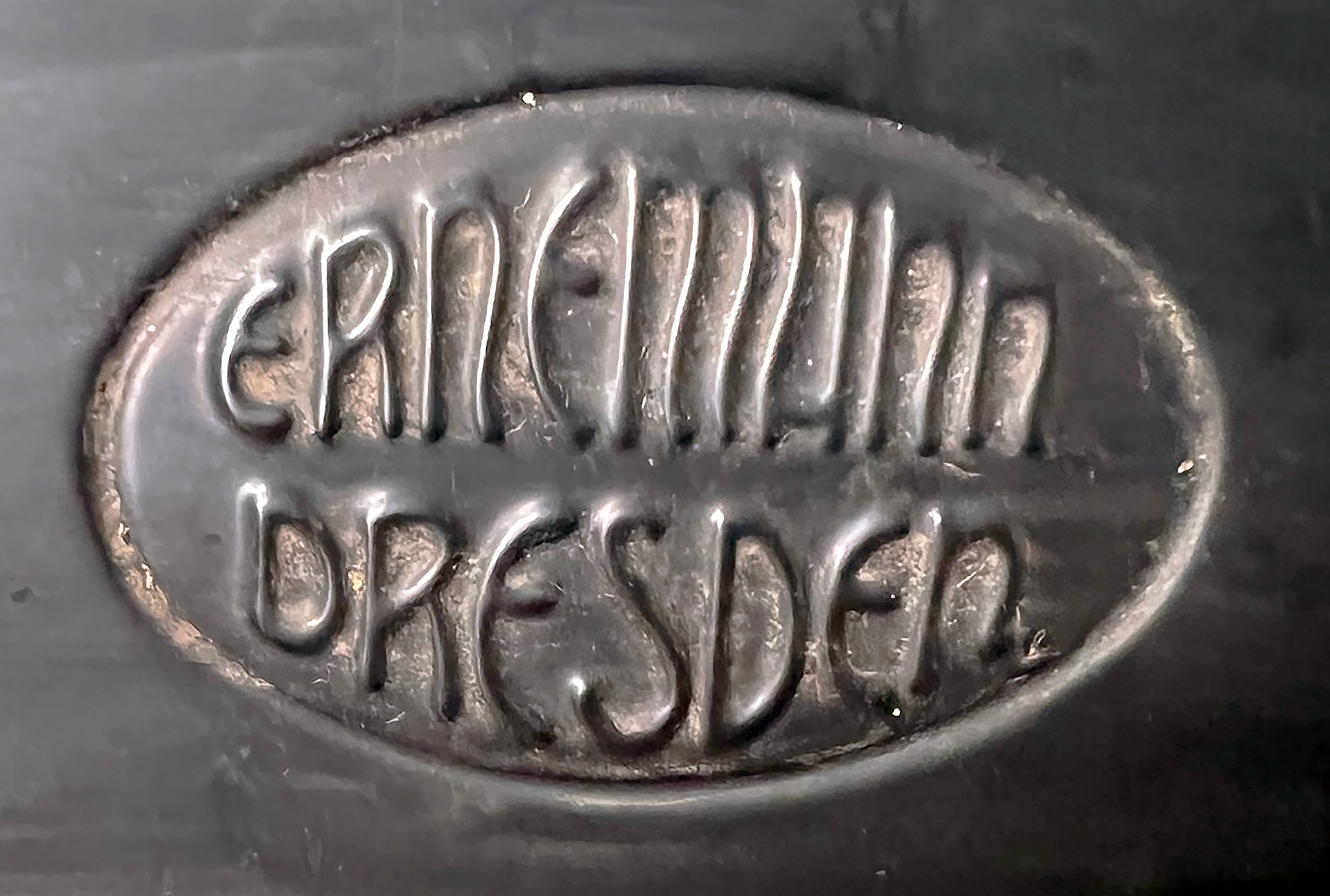
 Heinrich Ernemann (1850–1928) began his entrepreneurship with a shop for linen goods, trimmings and stockings in Dresden. In 1889 he and his partner Wilhelm Franz Matthias founded Dresdner Photographische Apparate-Fabrik Ernemann & Matthias. Since 1890 they powered their factory with steam engines, and one year later, in 1891, Matthias left the company.
Heinrich Ernemann (1850–1928) began his entrepreneurship with a shop for linen goods, trimmings and stockings in Dresden. In 1889 he and his partner Wilhelm Franz Matthias founded Dresdner Photographische Apparate-Fabrik Ernemann & Matthias. Since 1890 they powered their factory with steam engines, and one year later, in 1891, Matthias left the company.
Ernemann was self-educated about photography and talented for getting into that business. The first products of his company were wooden cameras for professional photographers. Until 1896 the company’s own production was largely limited to the wooden parts of the cameras; other parts had to be bought from suppliers.
Ernemann wanted to gain full control on his camera production, therefore he added four new departments for camera parts production. The booming camera industry in Dresden led to a period of overproduction, but Heinrich Ernemann knew how to get through the crisis: he transformed his factory to a stock market company, the Heinrich Ernemann, Aktiengesellschaft für Cameraproduktion in Dresden, founded in 1899.
The new corporation produced cameras and movie projectors in Dresden and Görlitz. It took over the camera maker Ernst Herbst & Firl and continued its Globus camera series. From 1901 to 1907 it was exclusive maker of Stöckig’s Union cameras. Later it used that brand itself.
Cinematographic activities
 In 1903 Ernemann began to produce small cine cameras for amateurs. In 1904, Heinrich Ernemann’s son Alexander, came back after five years from the U.S. where he had got international experience. His father Heinrich appointed him technical director of the company. With Alexander the cinematographic activities were driven further. The first cinema projector didn’t work well, but that failure resulted in the construction of the steel projector “Imperator” in 1909.
In 1903 Ernemann began to produce small cine cameras for amateurs. In 1904, Heinrich Ernemann’s son Alexander, came back after five years from the U.S. where he had got international experience. His father Heinrich appointed him technical director of the company. With Alexander the cinematographic activities were driven further. The first cinema projector didn’t work well, but that failure resulted in the construction of the steel projector “Imperator” in 1909.
In 1907 Ernemann introduced its first SLR camera, and one year later, in 1908, started making its own lenses. Until then it had purchased lenses from Carl Zeiss and Goerz. Before the first world war, Ernemann employed Johan Steenbergen, who later founded Ihagee, also in Dresden.
Alexander Ernemann also introduced more modern American ways of production and reward. This led to a strike in 1905, but put Ernemann into a better position when the photography industry suffered overproduction in 1908, forcing the company’s competition to merge into ICA in 1909.
During and after Worldwar I
During the war Ernemann partially switched to production of military products like its machine-gun camera and found many new customers for its “civil” vest pocket cameras among the soldiers. In 1920 Ernemann formed a company for its movie projectors together with the steel producer Krupp, Ernemann-Krupp Kinoapparate. The successor of this projector company still exists.
In 1923 the camera division moved to a new factory building in Dresden-Striesen. The building’s central tower, designed by Emil Högg und Richard Müller, has stood in Dresden-Striesen since 1923, and is still known today as the Ernemann Tower. This tower became the symbol of VEB Pentacon and has also been called the Pentacon tower.
The post-WWI times of the great German inflation until 1923 were good for Ernemann since inflation allowed low export prices for its products. In 1924 the company had to rationalize production, in spite of which Ludwig Bertele developed the “Ernostar 1:2” asymmetric lens with six elements for Ernemann.
For this fast lens the company introduced the Er-Nox camera for 6×4.5 exposures in 1924. In 1925 a 6×9 format version followed, and the cameras were renamed Ermanox. The Ernostar lens could be improved. It was an unusually fast and large f/1.8 85mm lens, allowing photography in dimly-lit theaters and the like, using only available light. Finally, a reflex version of the Ermanox was released in 1926.
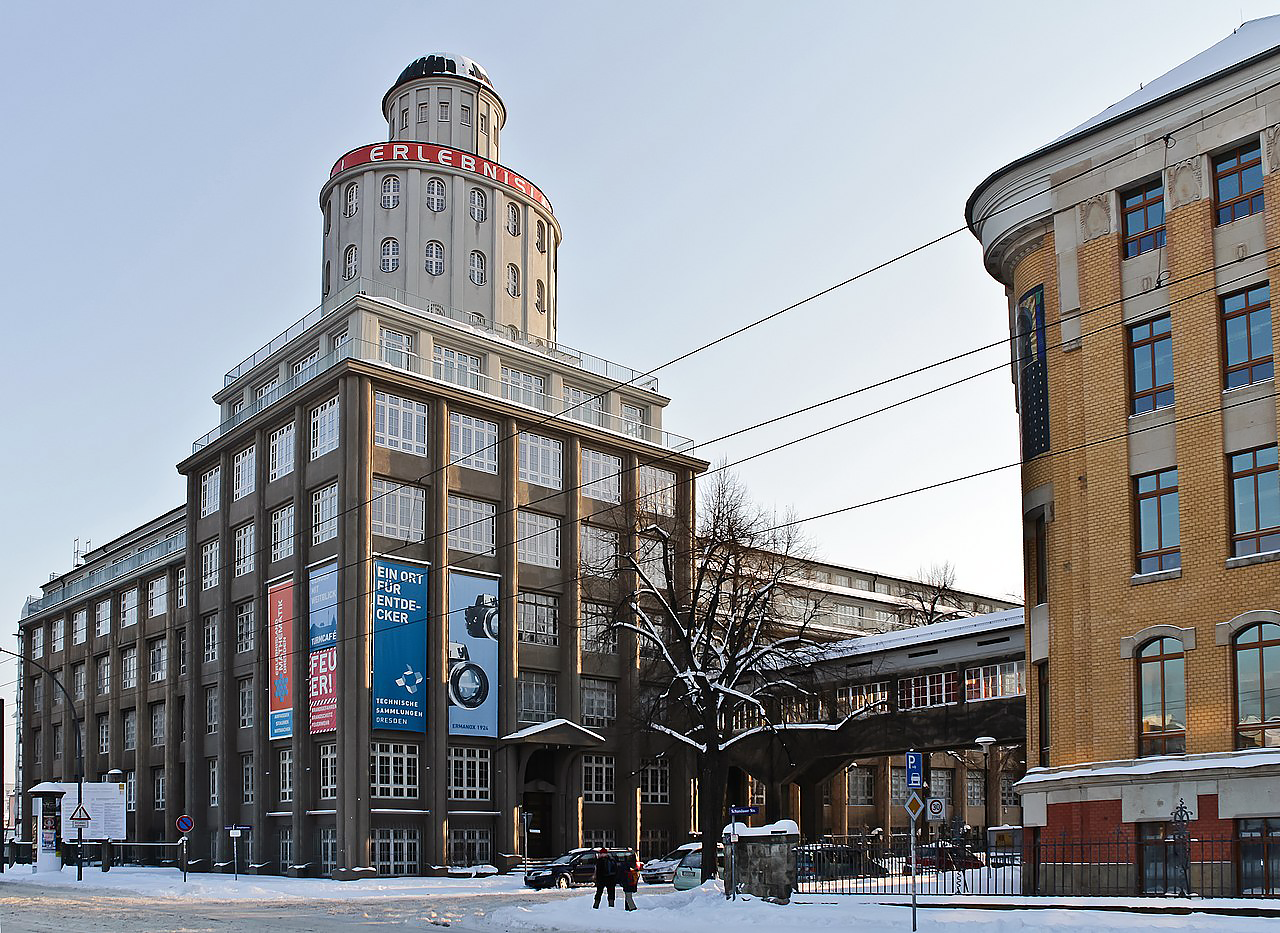
The Ernemann Tower was Germany’s first significant high-riser and was part of the new Ernemann camera factory complex built by architects Emil Högg and Richard Müller in Dresden Striesen. Heinrich Ernemann’s son Alexander was sent to the USA to learn from the industry there. When he came back he brought a lot of ideas to modernize the Ernemann company and how to give it modern buildings. The plans for the new buildings were made before WWI, the earliest plans for a high-riser built in Germany. Construction fell into wartime and was partially delayed to times after the war, including the tower. The latter was built from 1922-23. Including basement and the observatory on top it has 12 floors.
Other famous cameras from Ernemann include the Bob folding series and the Heag line of cameras as well as several sophisticated folding cameras.
In 1926 Ernemann merged with ICA, also in Dresden, Goerz in Berlin and Contessa-Nettel in Stuttgart to become Zeiss Ikon. By this time Ernemann had acquired 213 patents.
The Alex is a folding tailboard camera. It dates to at least 1895. The body of the camera is made from walnut wood. It has green cloth-covered bellows, not tapered, with leather-reinforced corners. The rear standard slides along the folding tailboard to focus. The camera was made in 9×12 cm and 13×18 cm sizes.
- Alex
- Archimedes and Archimedes Stereoskop
- Berry
- Bob series 0-XV, including:
- Bob 0
- Bob I
- Bob II
- Bob IIa
- Bob V
- Bob V Stereo
- Bob-Folding I – III (horizontal-folding cameras)
- Bobette I
- Bobette I (18×24)
- Bobette I (22×33)
- Bobette II
- Dove Stereoskop
- Edison
- Er-Nox
- Ermanox (rigid body)
- Ermanox (Klapp or strut-folding body)
- Ermanox Reflex
- Ernette
- Erni
- Erni Stereo
- Ernemann-Rundblick-Camera (360degrees panorama camera)
- Ernoflex
- Film K
- Europa
- Film and Film-Stereoskop
- Globus
- Globus Stereo
- Heag 0-XVI see list below
- Italia
- Kassetten-Film-Camera
- Kino I
- Klapp / Miniatur-Klapp
- Klapp Reflex
- Klapp Stereo
- Lea
- Liliput
- Liliput Stereo
- Mignon-Kamera
- Minor
- Miniatur-Ernoflex / Miniatur Klappreflex
- Moser-Stereoskop
- Multicolor
- Nansen, Nansen-Stereoskop
- Rolf I
- Rolf II
- Röntgen
- Schülerkamera ˶Alex˝
- Simplex
- Simplex Ernoflex
- Spiegelreflex-Camera
- Ernemann telescopic-folding plate camera
- Tropen-Klapp
- Unette
- Universal
- Velocam
- Velo-Klapp
- Zwei-Verschluss-Camera
- Heag 0, Heag 0A
- Heag 00
- Heag I, Heag I Stereoskop
- Heag II, Heag IIa (amateur camera)
- Heag III
- Heag III Stereo
- Heag IV, Heag VI Stereoskop ** Heag V
- Heag VI
- Heag VII
- Heag VIII
- Heag IX, Heag IX Universal
- Heag X, Tropen Heag X
- Heag XI, Tropen Heag XI
- Heag XII
- Heag XIV
- Heag XV (vest pocket camera)
- Heag XVI

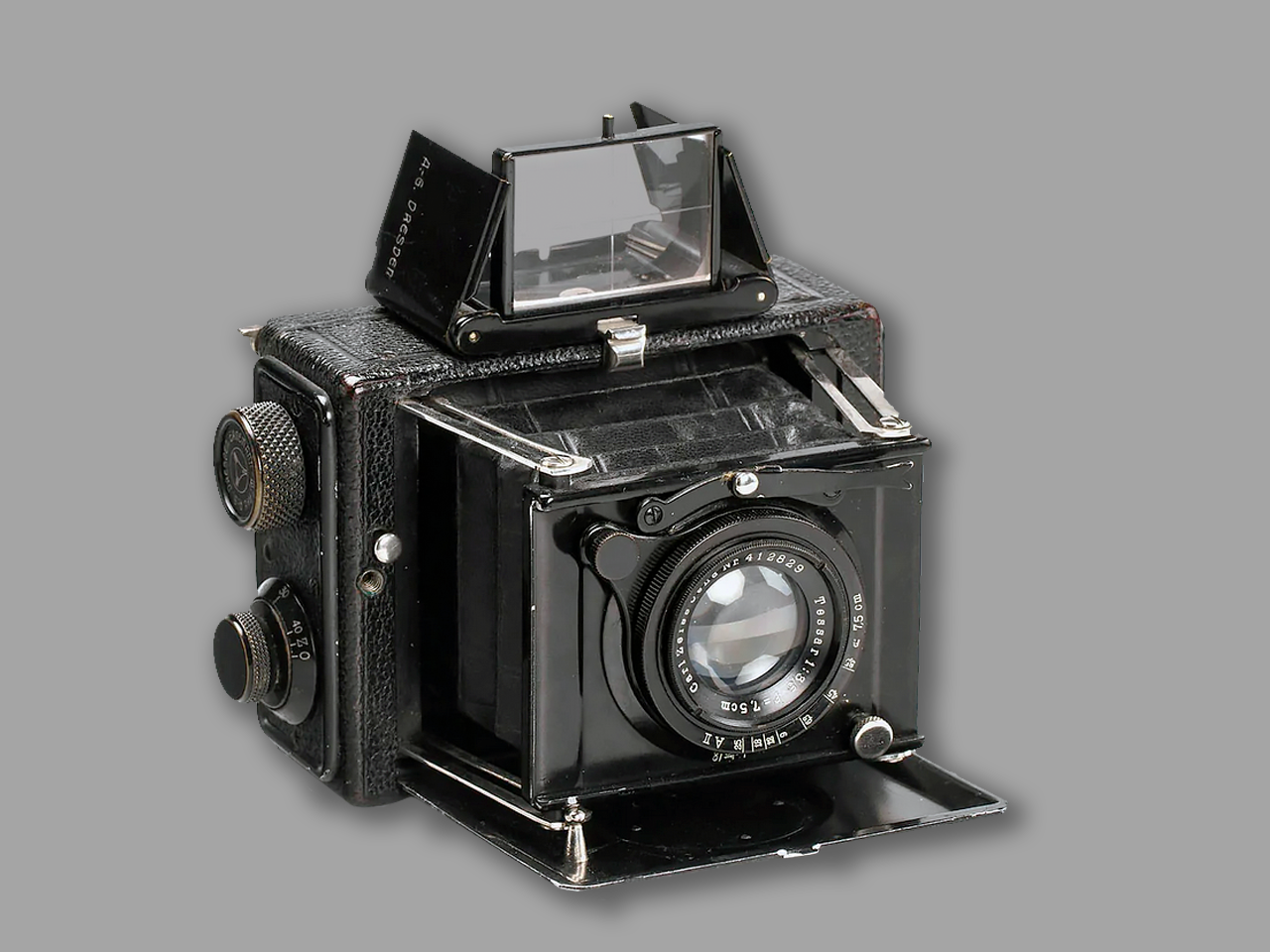
The Ernemann’s Miniatur-Klapp 4,5×6 were in production from 1920 to 1925. This is miniature version of the Klapp camera for 4,5×6 plates or film packs. Self-casing camera with split cover Newton finder and simplified focal plane shutter design, more like the Ermanox.
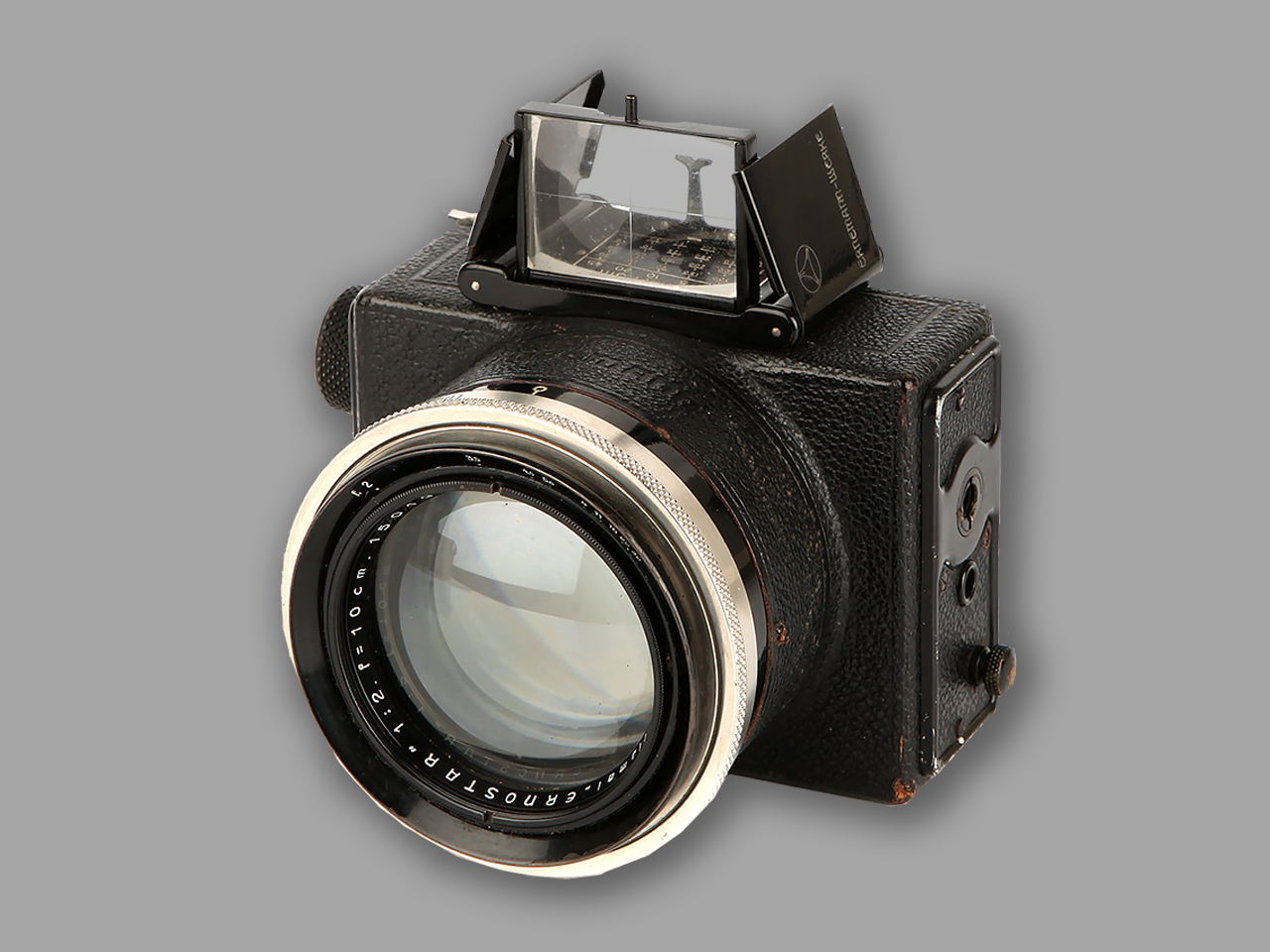
The ‘Er-Nox’ Ermanox, first introduced in 1924 under the name Ernox, is a camera for 4.5×6 cm plates. The camera has a huge and unusually fast Ernostar 100 mm f/2 lens. The ‘Er-Nox’ has a focal-plane shutter, with speeds 1/20 – 1/1000 second, plus ‘B’ and ‘T’.
FOUNDING DATE: UNKNOWN
FOUNDER: UNKNOWN
COMPANY NAME:
The Expo Camera Company
COMPANY ADDRESS:
256, and later 241-3 W 23rd St, New York, USA
The Expo Camera Company of New York, was specialized in miniature and spy cameras in the 1900s.
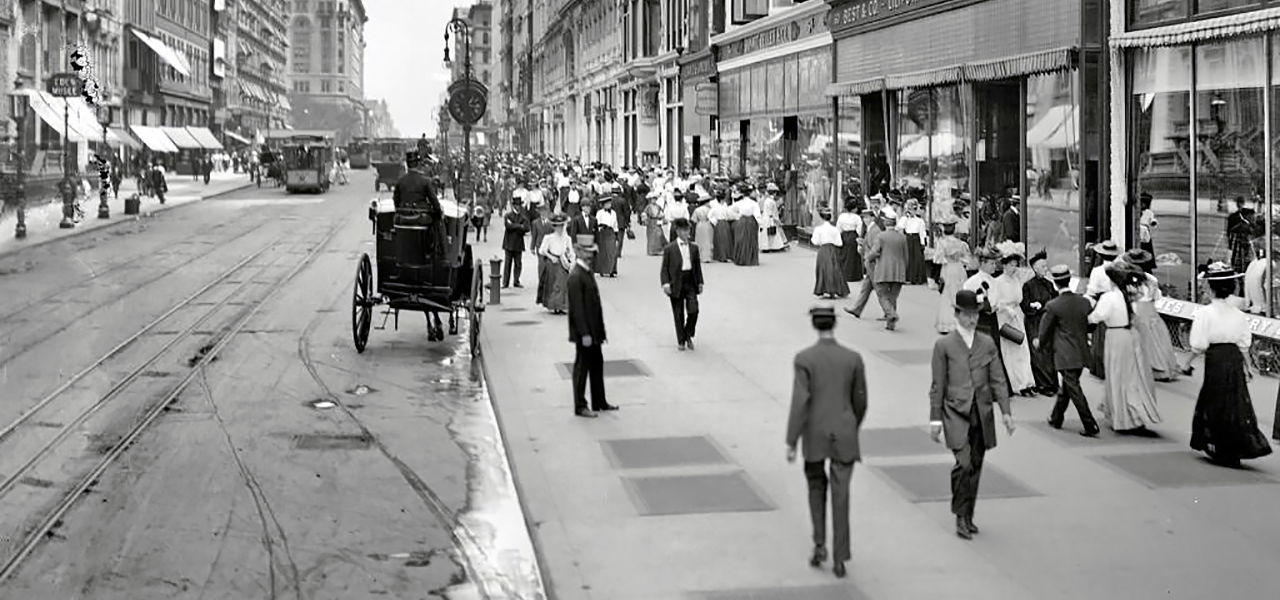
A street view of West 23rd Street, New York City, circa 1905.
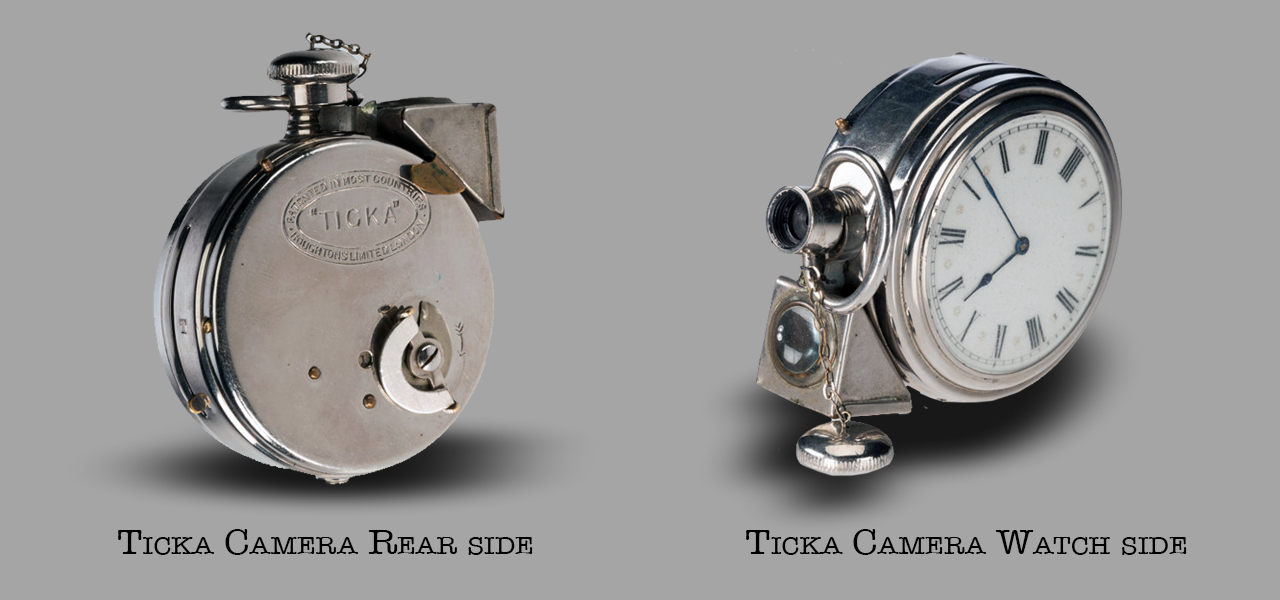
The Ticka was one of the more popular disguised cameras. In Britain it was manufactured by Houghtons, in the US it was sold as the Expo and introduced a year earlier in 1905. Early versions of the Ticka have “Patented throughout the world” stamped on the case and have a square window for the frame counter, those made a year or two later have “Patented in most countries” and a round window.
Over the years, there have been a surprising number of cameras designed to resemble watches but, of all the watch-form cameras made, the most popular and commercially successful was the aptly-named ‘Ticka’.
 On September 6, 1904, Magnus Niell, a Swedish engineer living in New York, took out a patent for a compact roll-film camera designed in the shape of a pocket watch. The camera was described in the patent as an improved photographic camera both in novel form and construction. That could be carried in a vest pocket and resemble the form of a watch case.
On September 6, 1904, Magnus Niell, a Swedish engineer living in New York, took out a patent for a compact roll-film camera designed in the shape of a pocket watch. The camera was described in the patent as an improved photographic camera both in novel form and construction. That could be carried in a vest pocket and resemble the form of a watch case.
Niell sold the American manufacturing rights to the Expo Camera Co of New York who produced their Expo watch camera for over thirty years. At the time of the patent, Magnus was registered as a resident of Sweden and Norway but was living in New York. Also, around the time of the submittal of the patent Magnus assigned one half of the rights to Thomas Wallace.
In Britain, the camera was made by Houghtons Ltd, probably the largest photographic manufacturer in the country at the time. Houghtons named it the Ticka watch pocket camera and first advertised it for sale in 1906. The Expo Camera Co was taken over in the late 1920s by their dealer G Gennart. The success of the Ticka and Expo gave rise to a version in 1910 from Uyeda Camera Co of Japan. This was called the Moment and even have a monogram resembling the word Ticka in shape. Very few were made.
The Expo-camera program
A total of 4 cameras have been marketed by Expo Camera Company:
- Expo Watch Camera (1905-1939): as the name suggests, a camera the size and shape of a pocket-watch. It takes twenty-five exposures on a daylight-loading film cartridge. Original Price: camera only about $3 in 1916.
- Police Camera (1911-20): a small, metal-bodied box camera with a fixed-focus achromatic lens and with a focal-plane shutter, but with only ‘T’ and ‘I’ speeds. Intended for discreet or covert use.
- Expo Focal Plane Camera (about 1911): very similar to the Police Camera. This model has a Watson viewfinder, which rotates for horizontal or vertical use.
- Expo Easy-Load (1926): a box camera for 4 x 6.5 cm exposures on film in special ‘Easy-Load’ film cartridges.
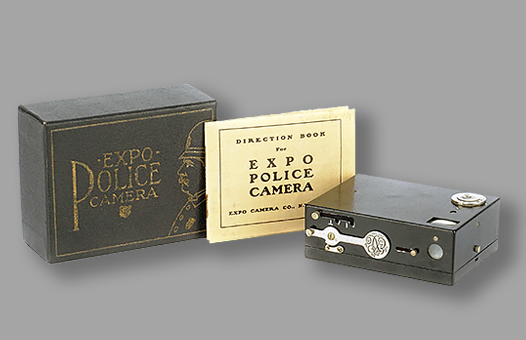
An Expo Camera Co. Police Camera, 1911-24, 18x28mm, black body, complete with original instructions, ‘caution‘ insert, and maker’s box.
The Expo Watch Camera
Designed to be small, easily carried and mistaken as a pocket watch, the Expo Watch camera was a popular novelty, or disguised camera, of the early 1900s. The camera measures 2 1/4 inches in diameter x 7/8 inches, weighs 2 3/4 ounces and fits in the palm of a hand.
It took 25 exposures from a single drop-in roll film cassette. One significant feature of this camera, was that the film could be reloaded in full daylight. The negatives are 16 x 22mm. A great innovation for that time. The lens is fixed focus 25mm, and shutter mechanism consists of a 1/25 sec sliding plate. A clip on brilliant finder was an accessory and significantly adds collector value when accompanying the camera.
The Expo Police Camera
The Expo Police Camera was manufactured beginning in 1911, and continued until approximately 1925. This miniature camera only measured 2 1/2 x 3 3/8 x 1 inch thick. It was very easily slipped into a pocket. It has a fixed universal focus with achromatic lens and a focal-plane shutter. It takes daylight loading film-holder of twelve exposures 1 x 1 5/8 inches, that is easily installed. An optional police enlarger can enlarge negatives to post card size photos. The camera was originally priced at $5.00. Film was 0.25 cents and the enlarger was priced at $3.00.
The Expo Easy-load Camera
The Expo Easy-Load box camera was constructed of wood and covered with seal grain imitation leather. It was available in four colors, red, green, brown and black. It was fitted with a fixed focus Meniscus lens and a rotary sector shutter. It accommodated Expo easy-load film No. 7, for producing exposures 1 5/8 x 2 1/2 inches in size. Film loading and convenience was one of its best appeals. The camera measured 3 1/2 x 2 1/4 x 4 5/8 inches.
The Expo Easy Load Camera was labeled with several different manufacturers. Initially by the Expo Camera Co. A reference to the Gennart Expo camera corporation of New York in 1926, who reportedly opened a new factory in South Plainfield New Jersey recorded to be making cameras at a rate of 126,000 per month. Later the camera was made by the International Camera Co located at 436 Tompkins Street, Orange, New Jersey.
The Expo Focal Plane Camera
This camera was very similar to the Expo Police Camera. It had a Watson viewfinder, which rotated for horizontal or vertical use.
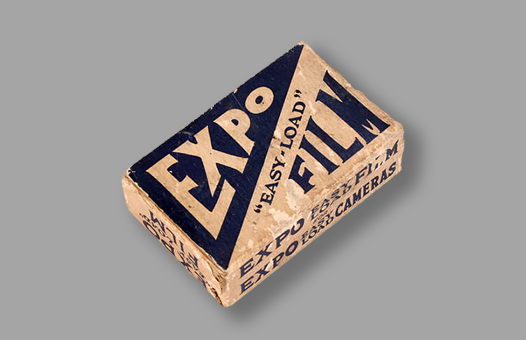
Expo Easy-load film in box. The film is usable only in one special cartridge, already full, which contains film 17.5mm for 25 exposures 16x22mm. A great innovation for that time. The ancestor of our dear silver films! A cassette charged with an Expo film cost 20 cents.
The Expo Watch Camera
The Expo camera was available for over 3 decades. It was introduced in the United States in 1905 and offered for sale as late as 1939. The original Price was only about $3 in 1916. Later models of the camera feature different company names on the face plate. In 1935 there were also coloured cameras in red, blue and black enamel and these cameras are extremely rare.”
Enlarger for Expo watch camera negatives. The following text is out of their leaflet accompanying the Expo camera.
To demonstrate the practicability of Expo We have the best enlarging equipmen t obtainable, and if a photo supply dealer is not convenient or is not equipped to do this work, send us a trial order for developing, printing or enlarging and we shall prove to your satisfaction Expo possibilities.
